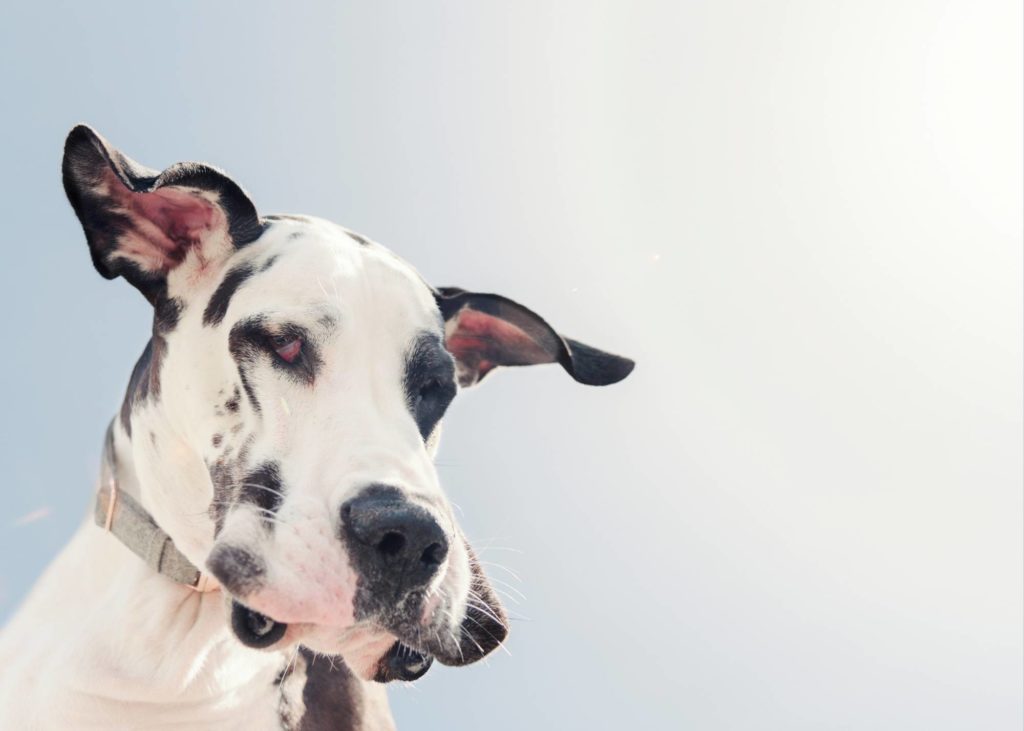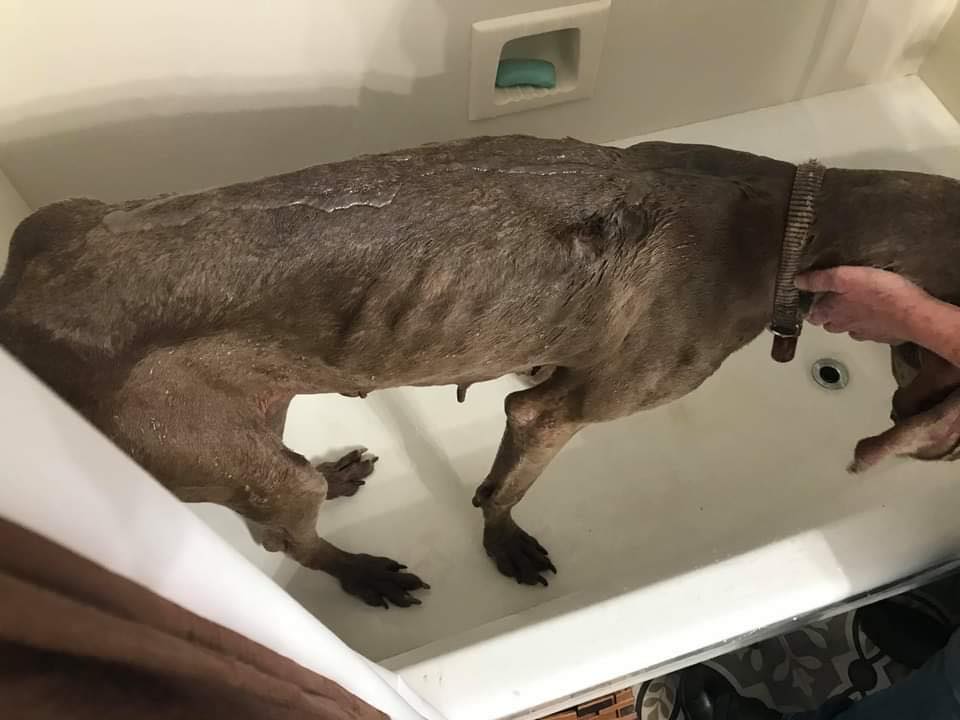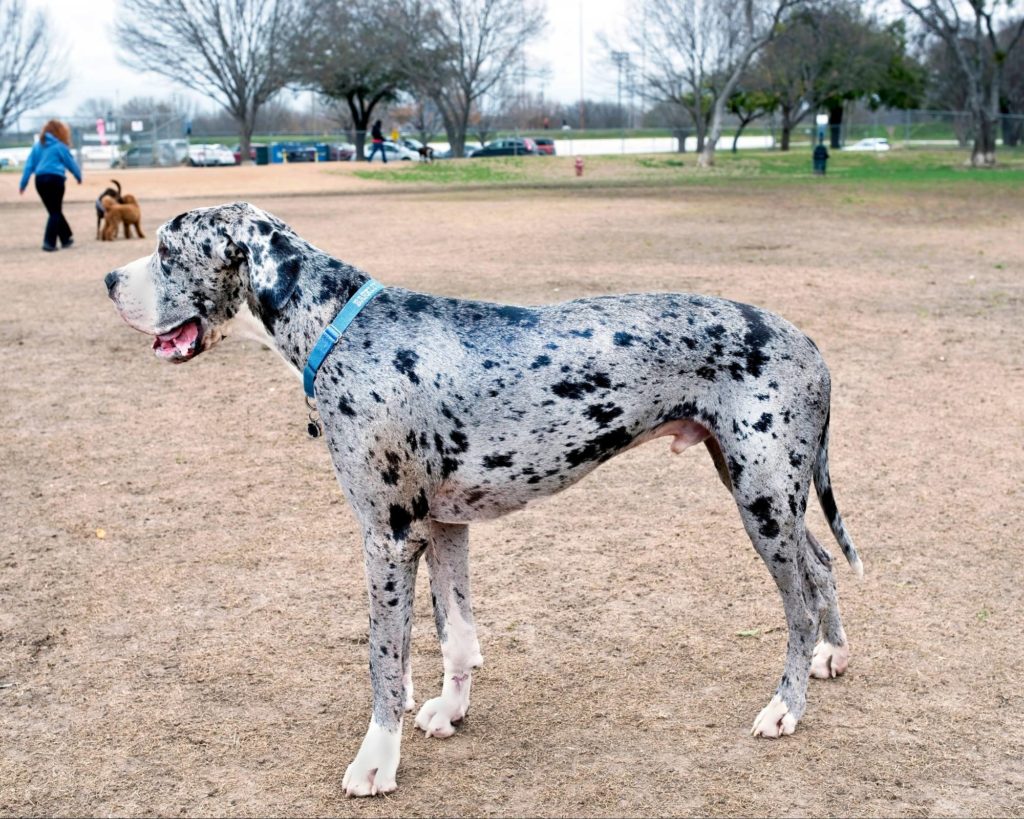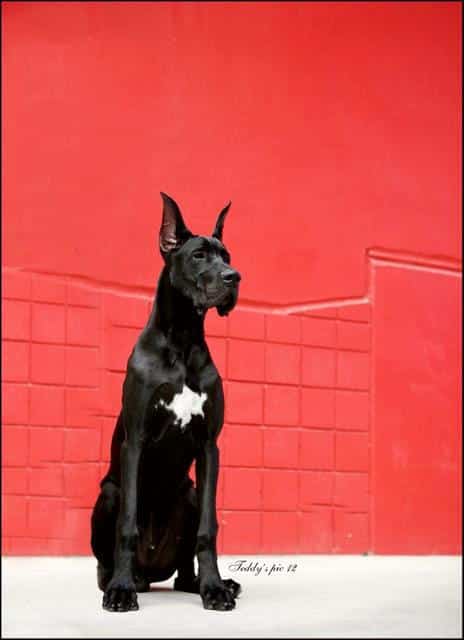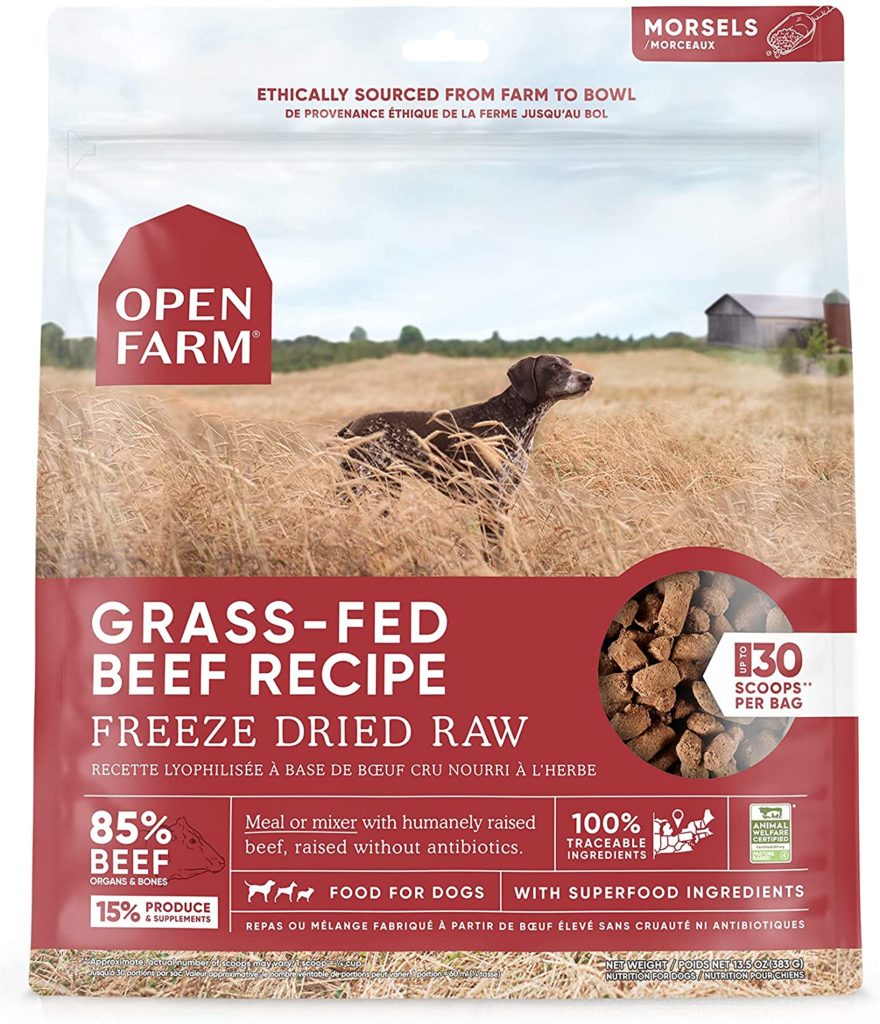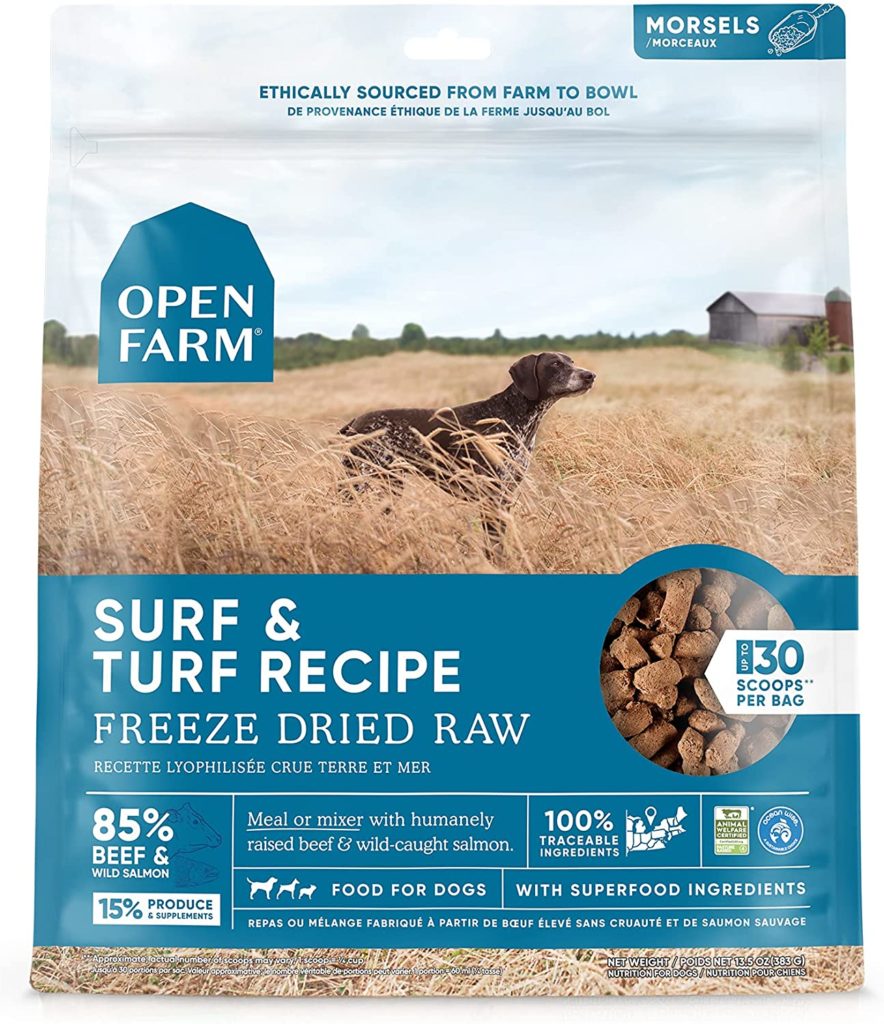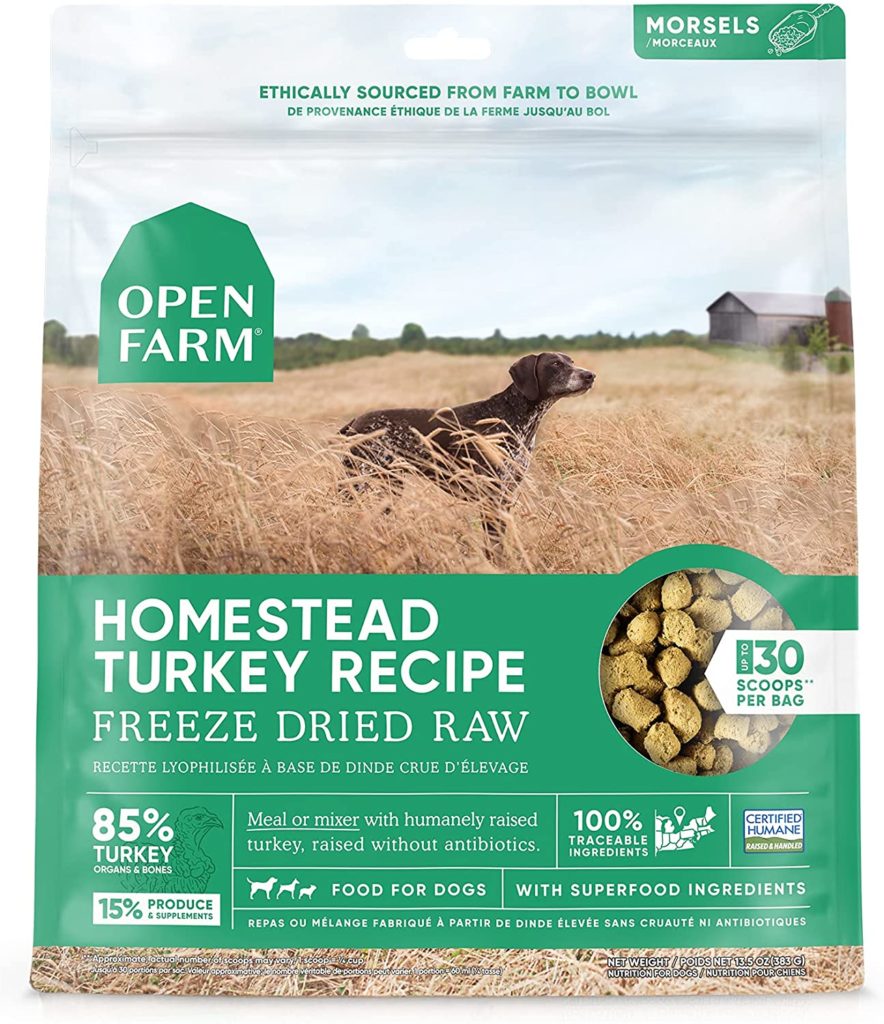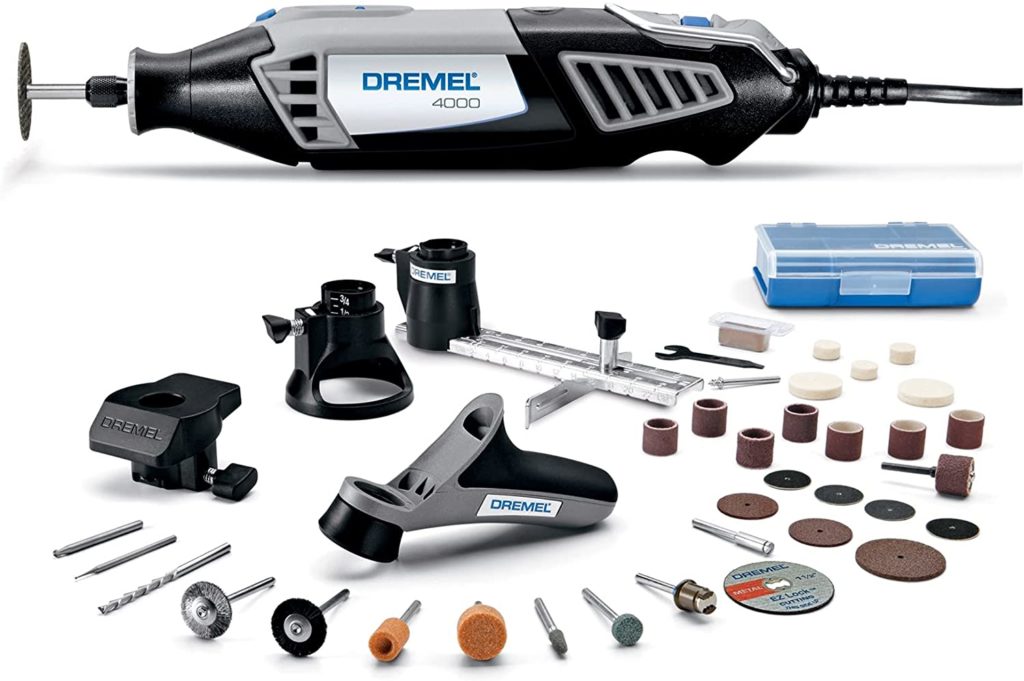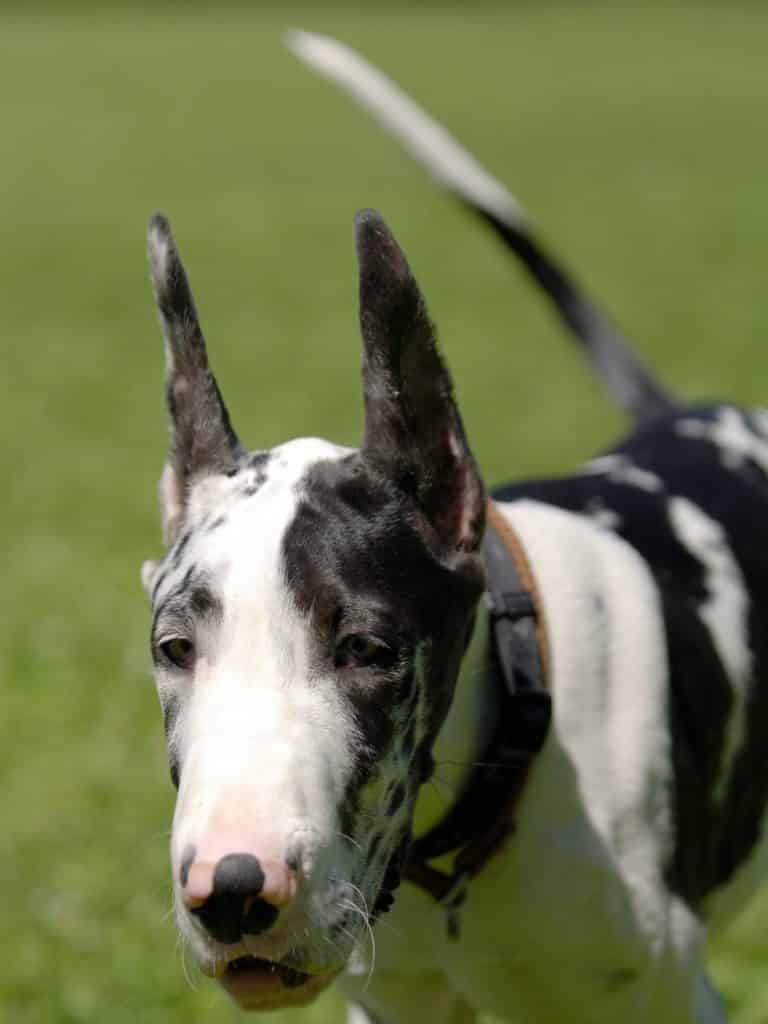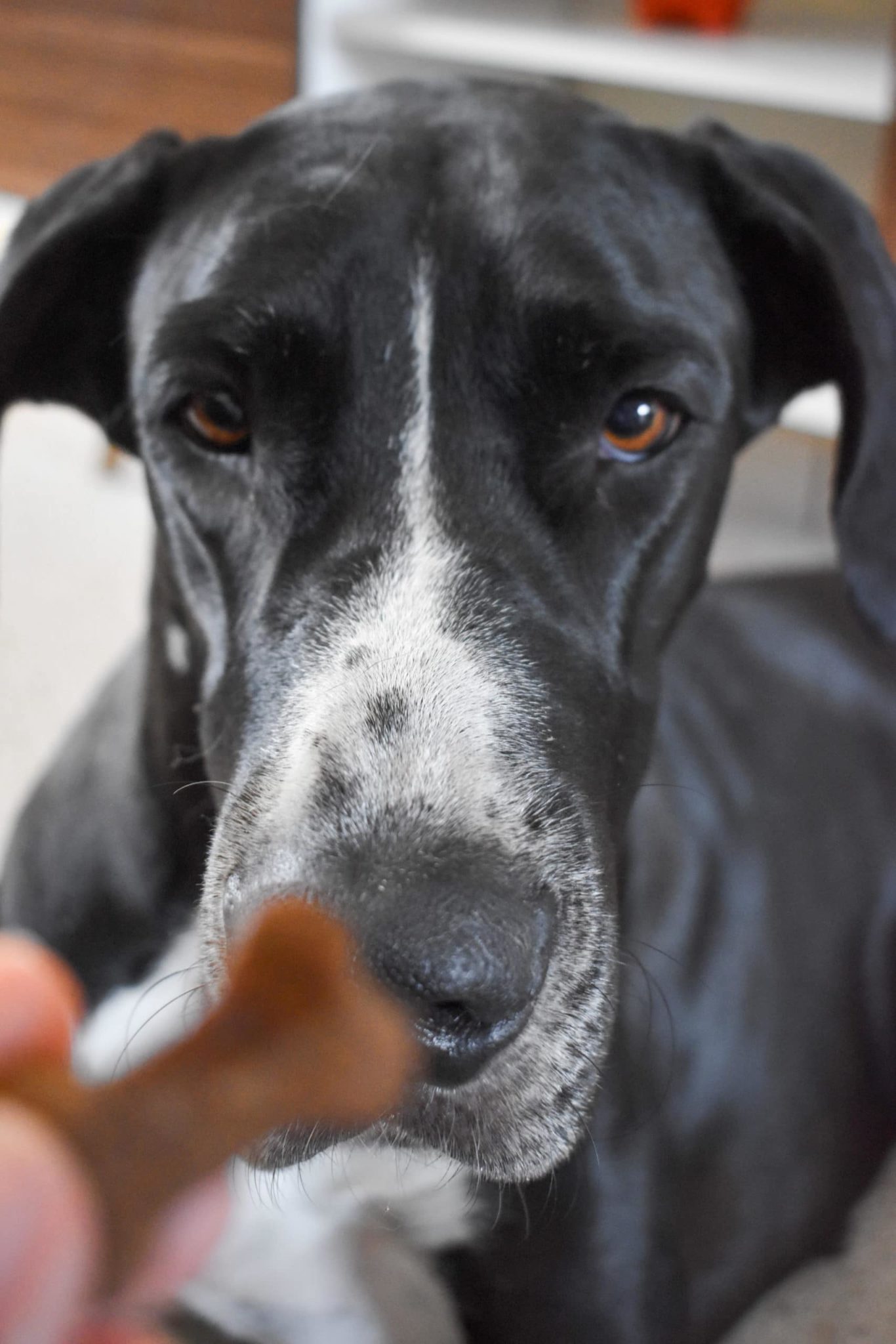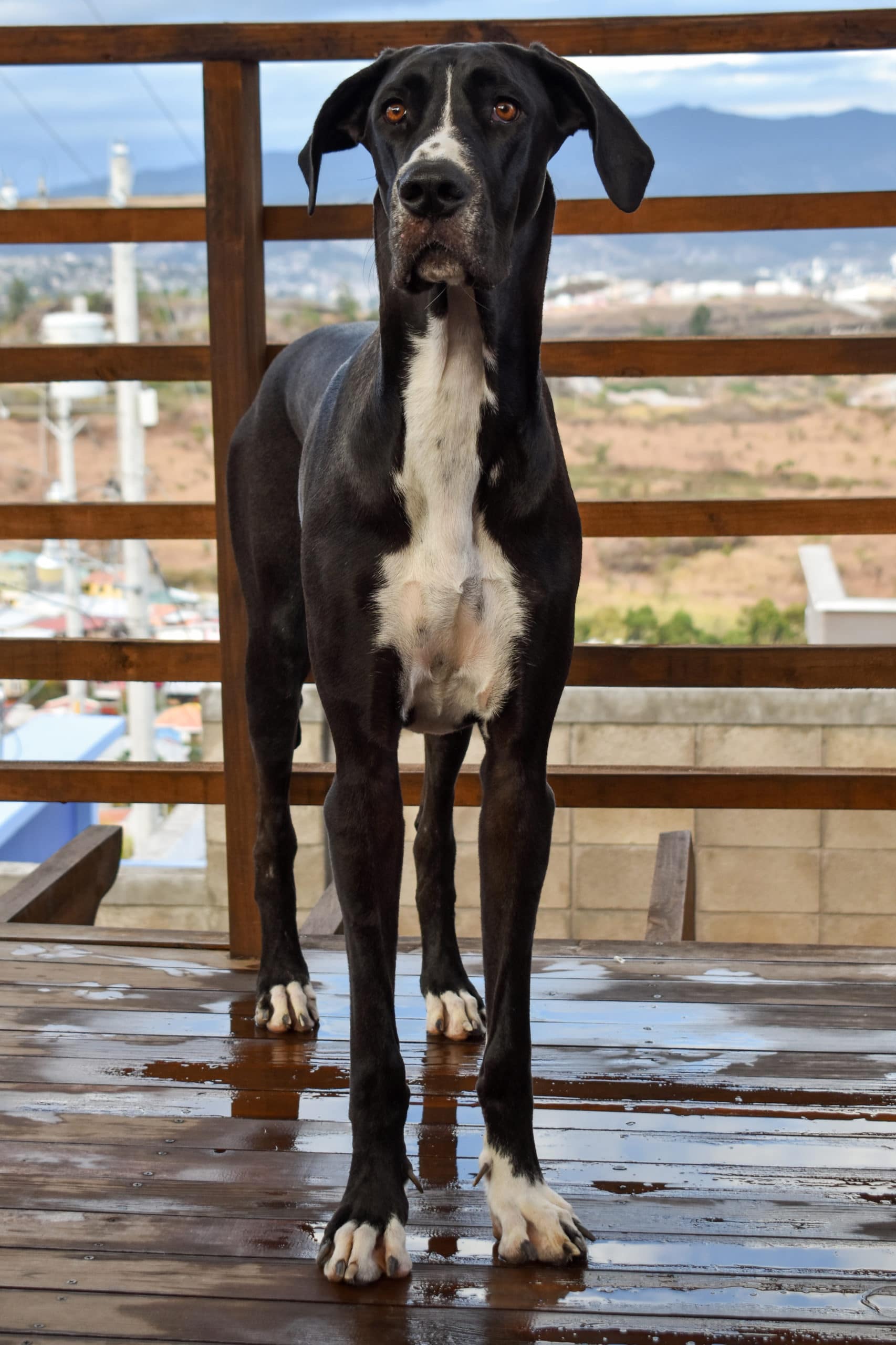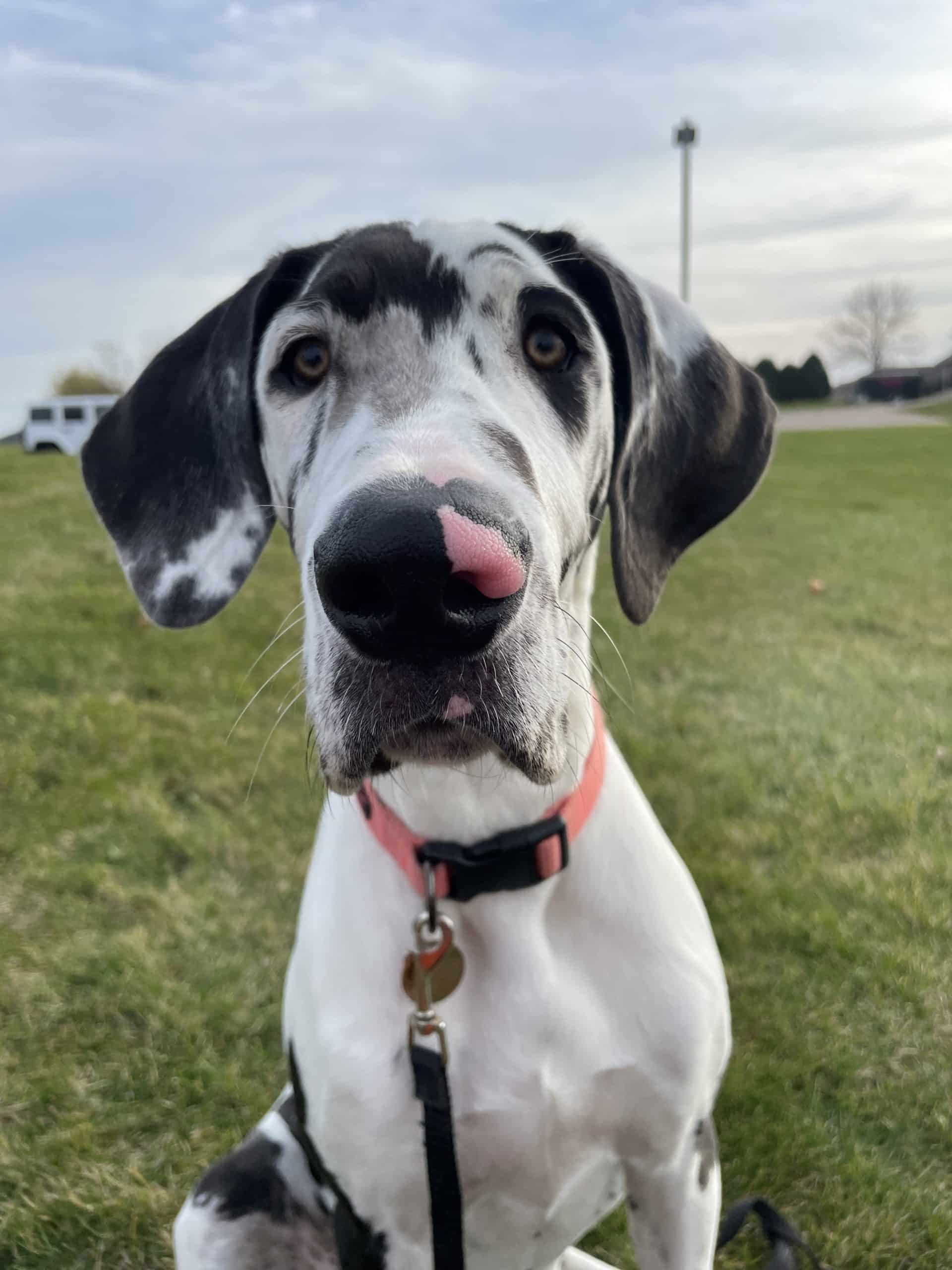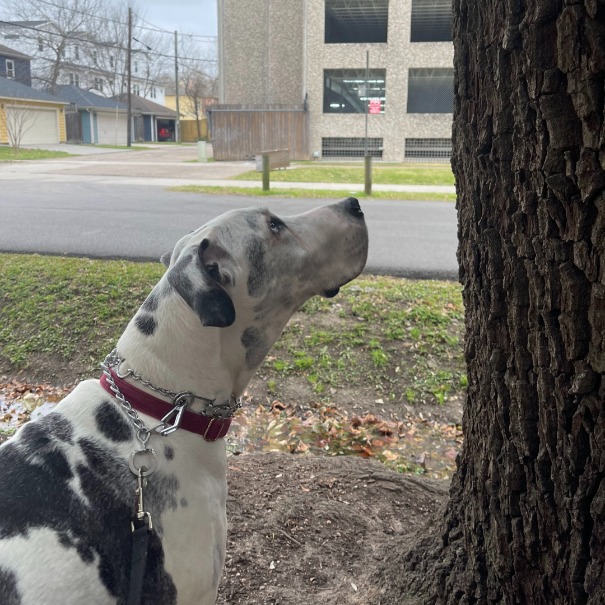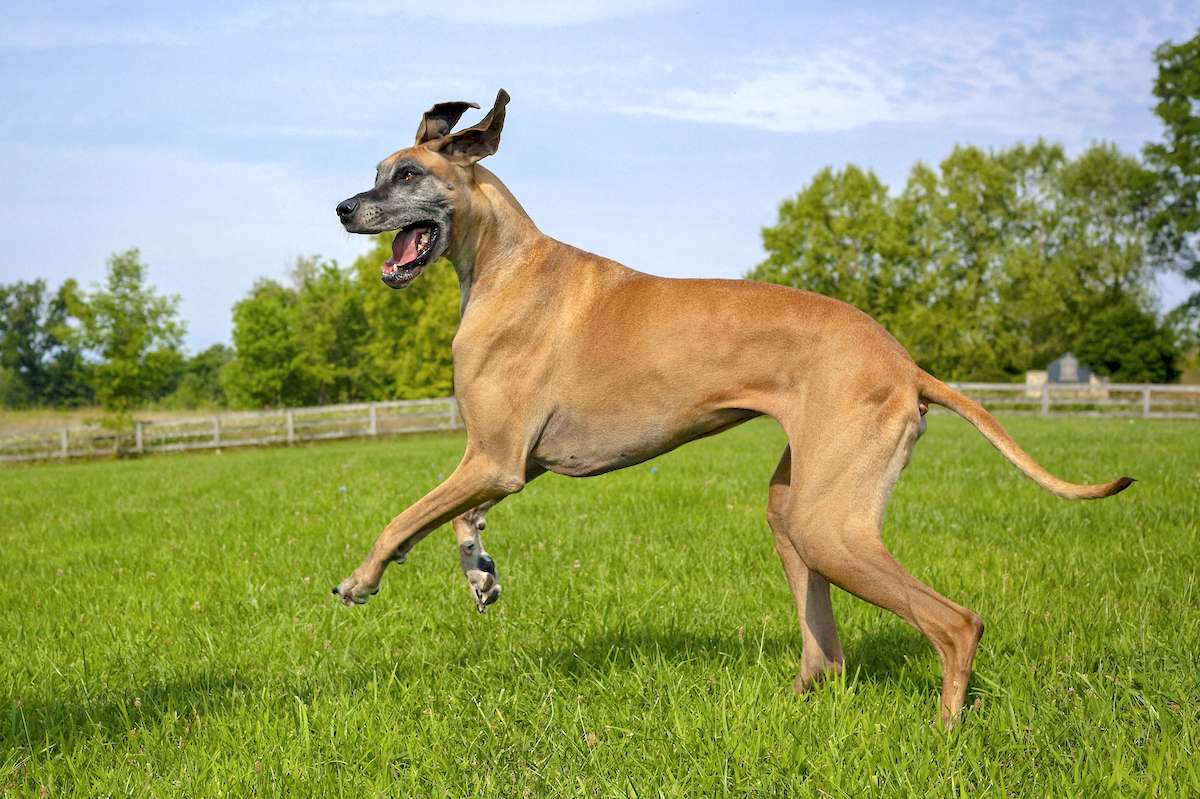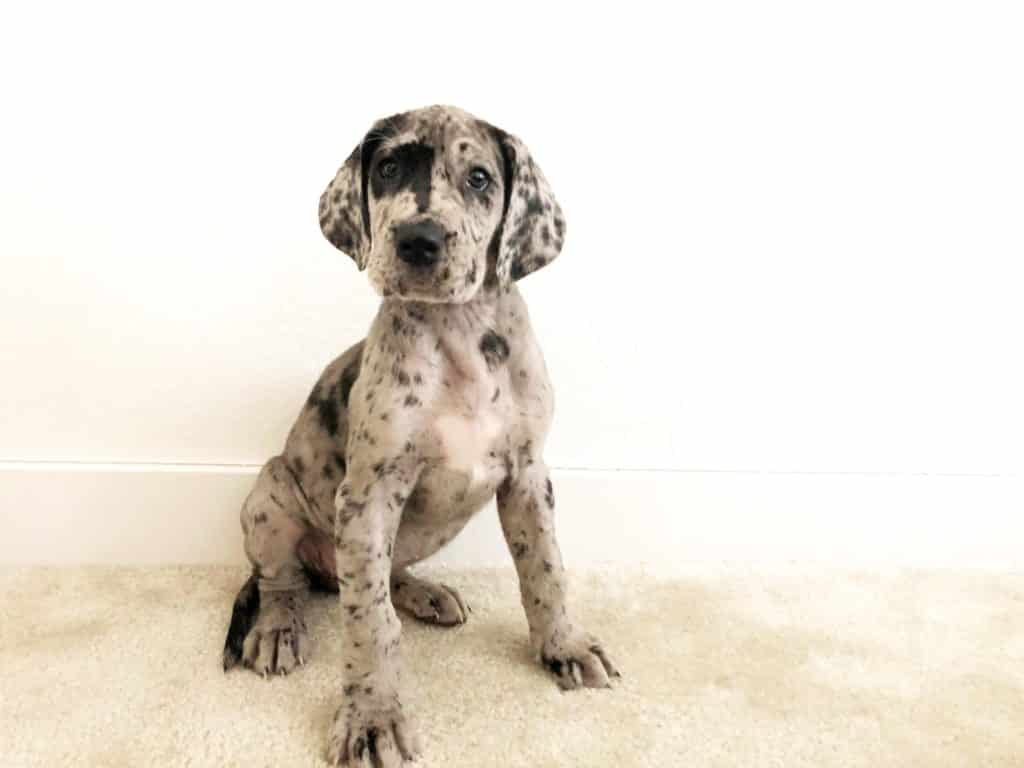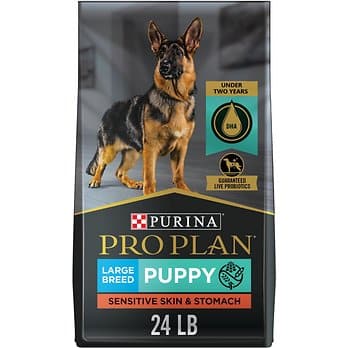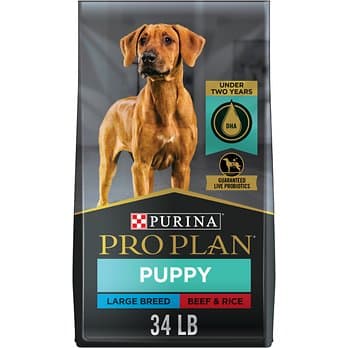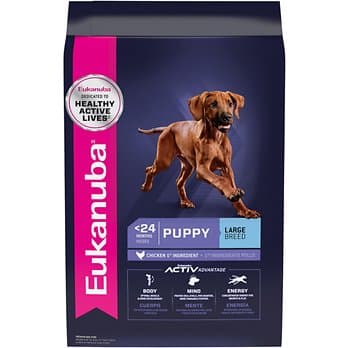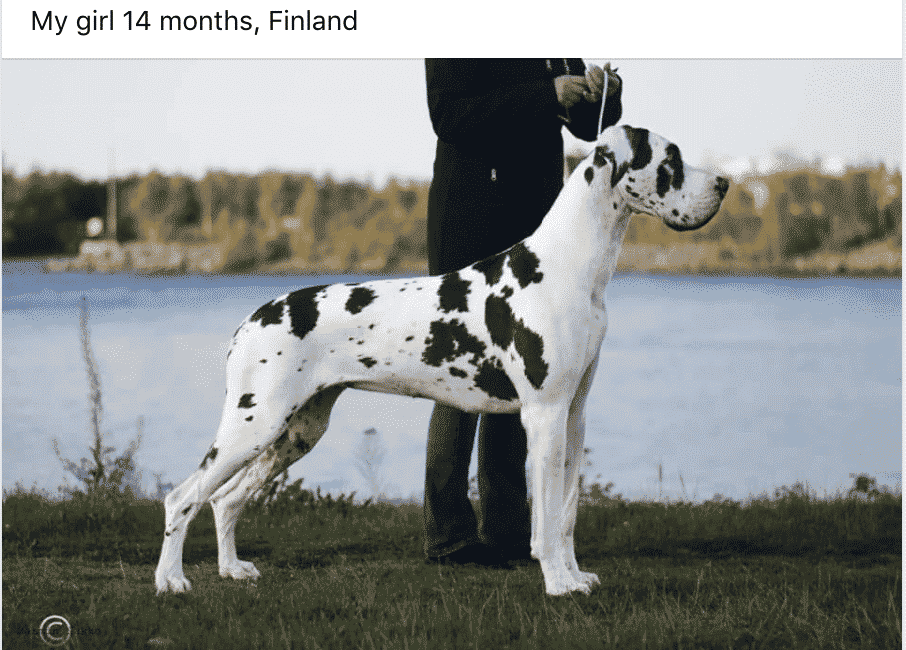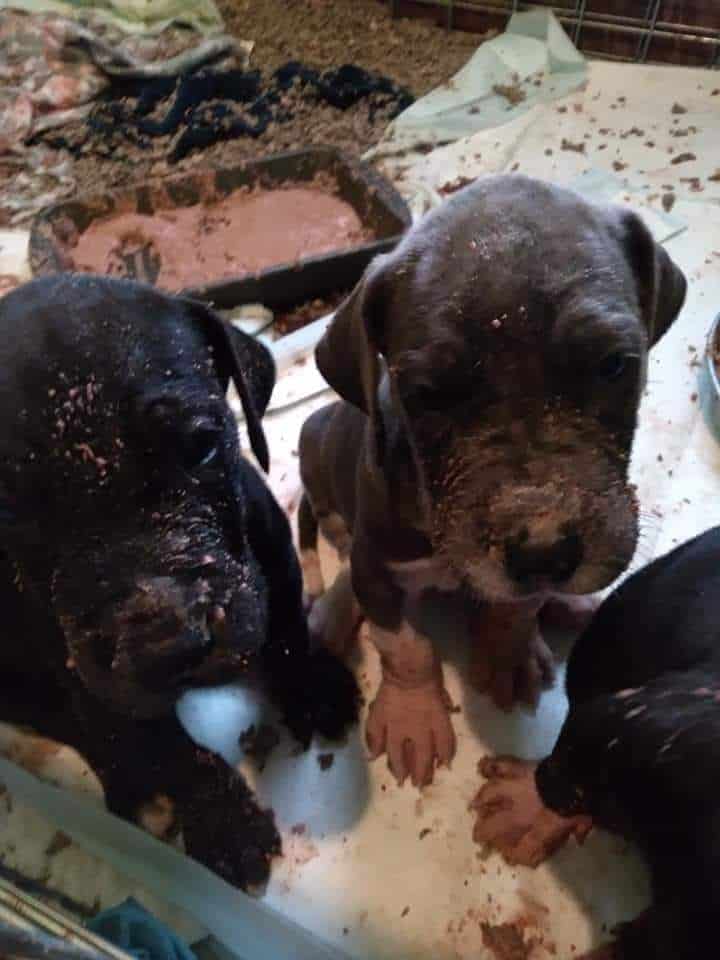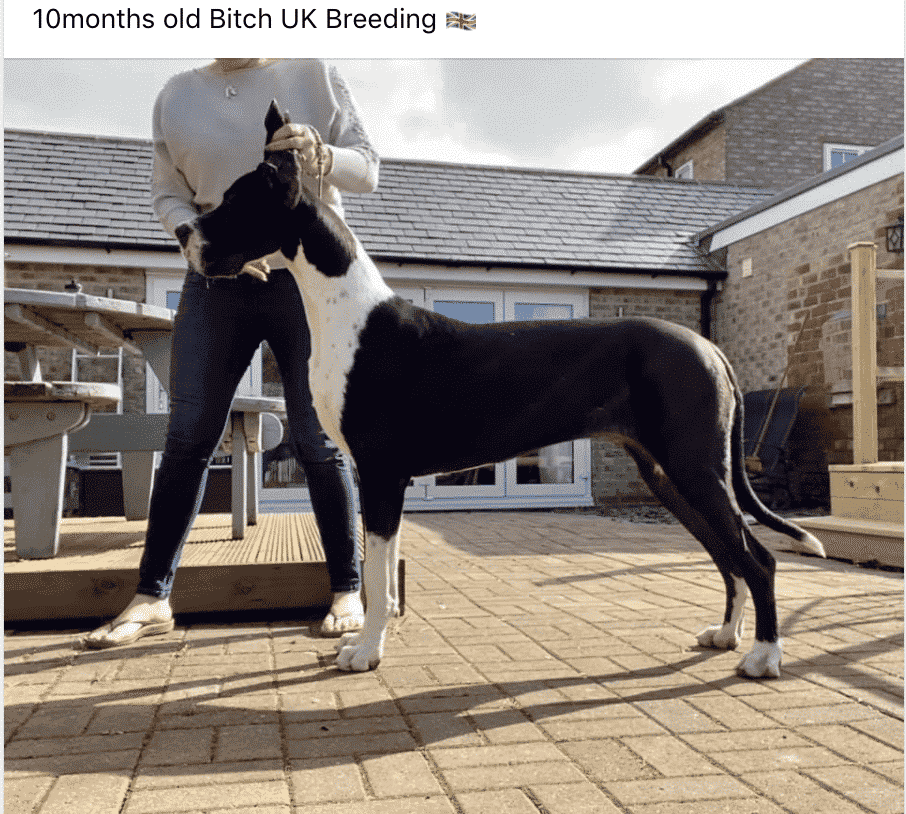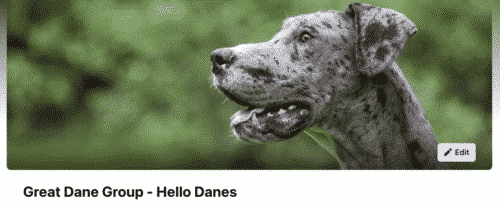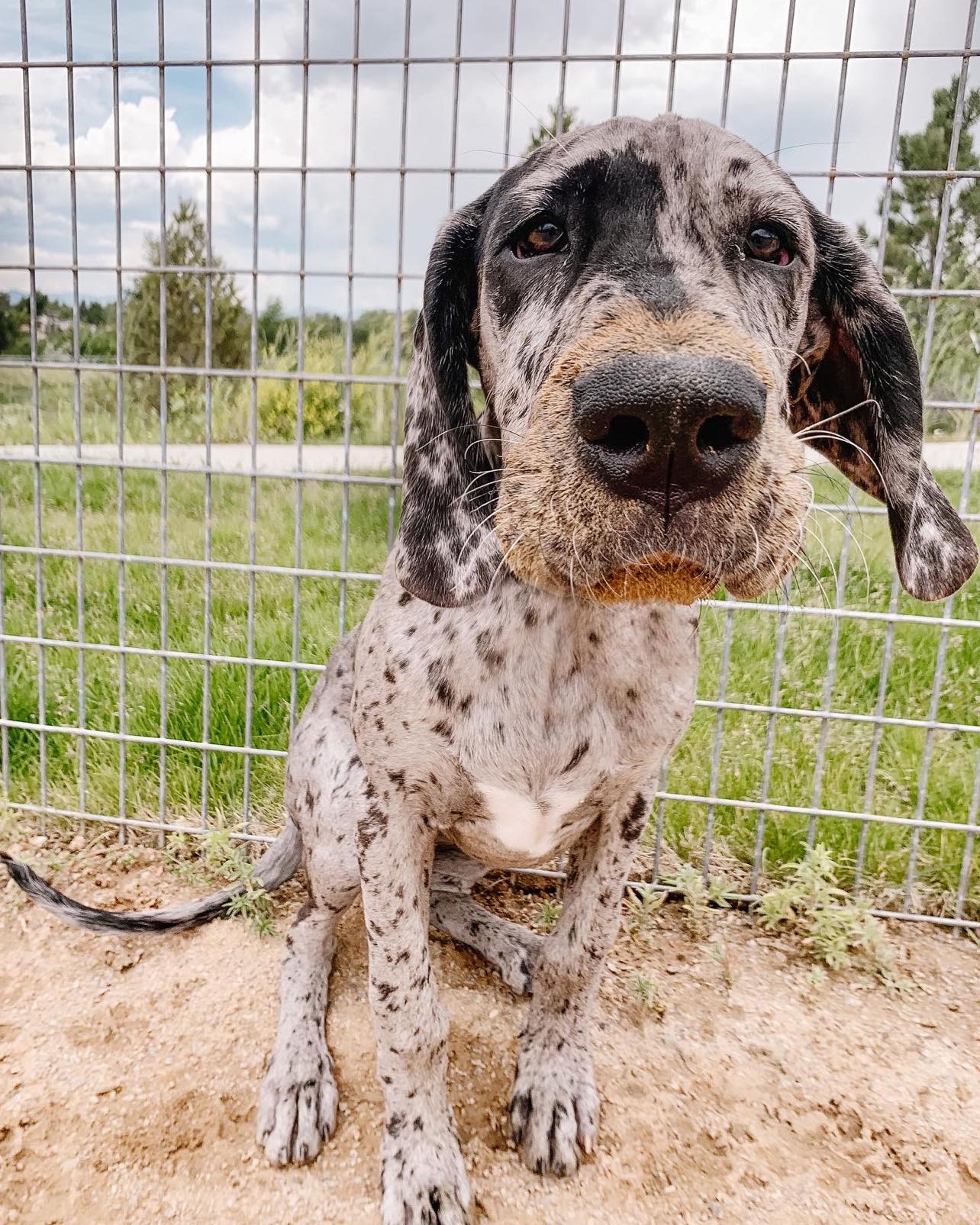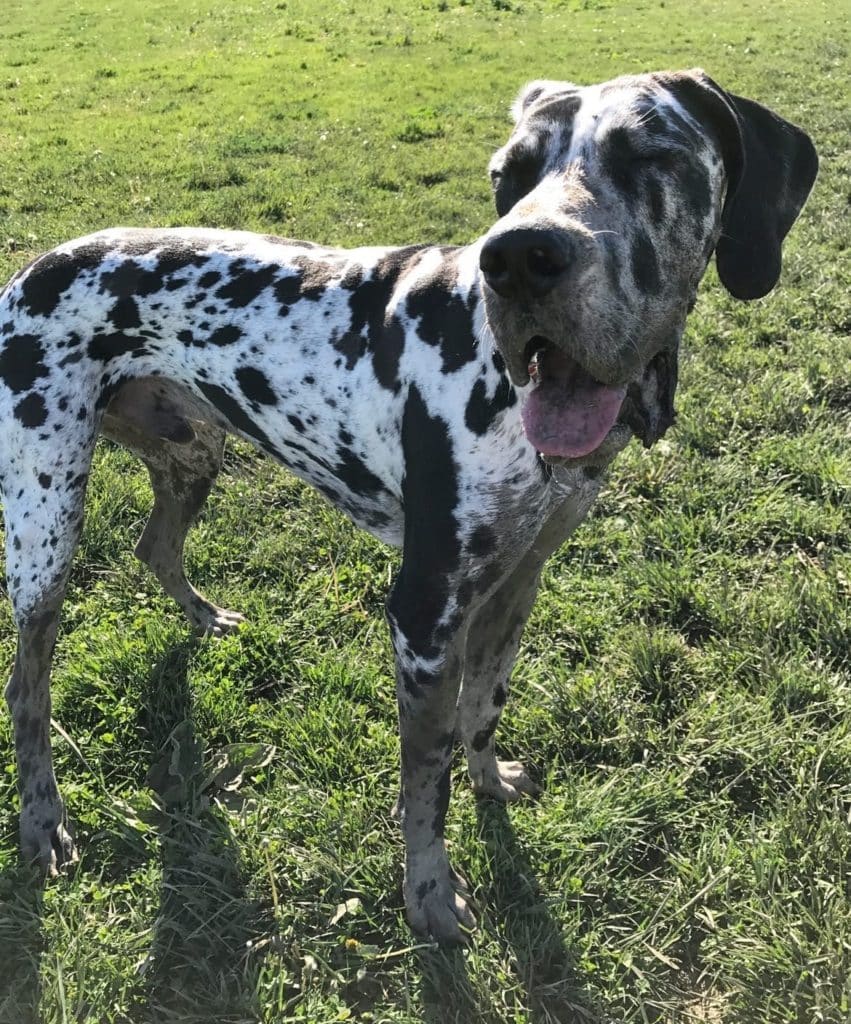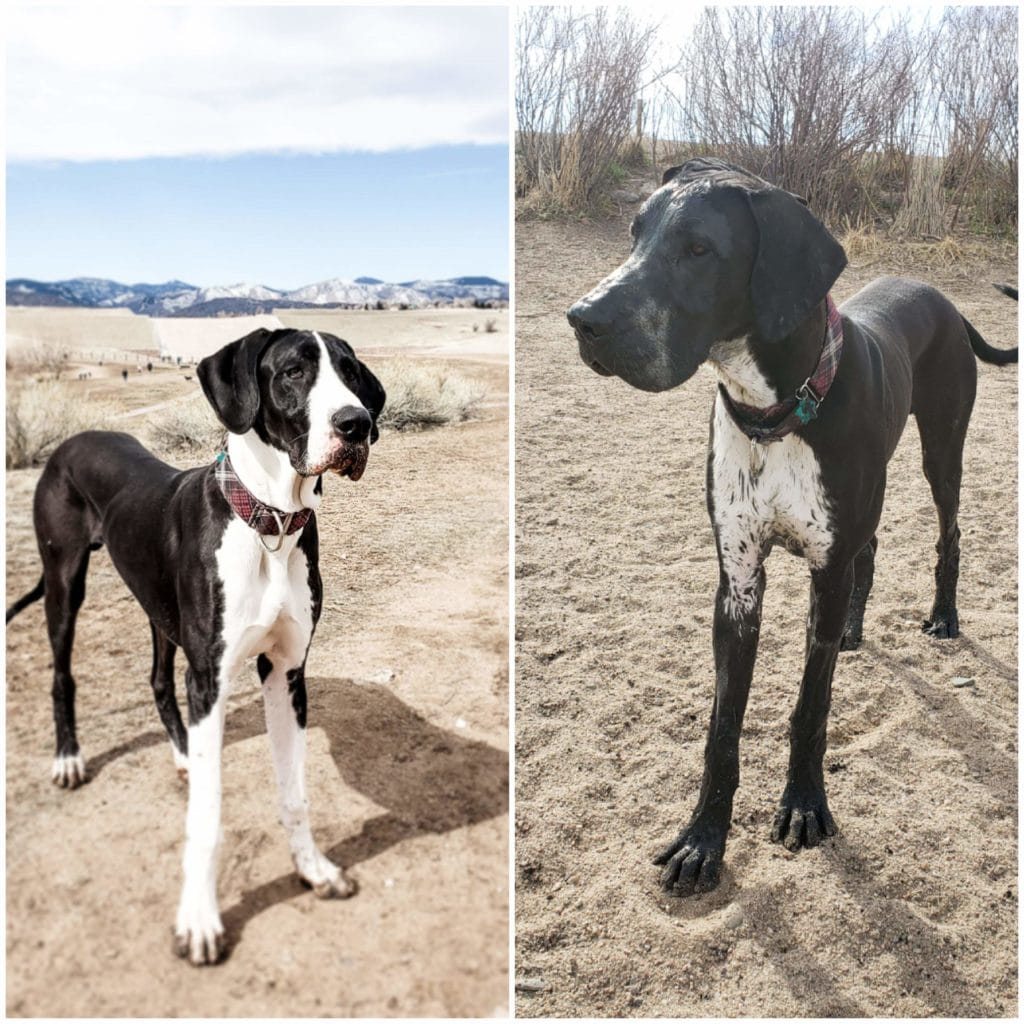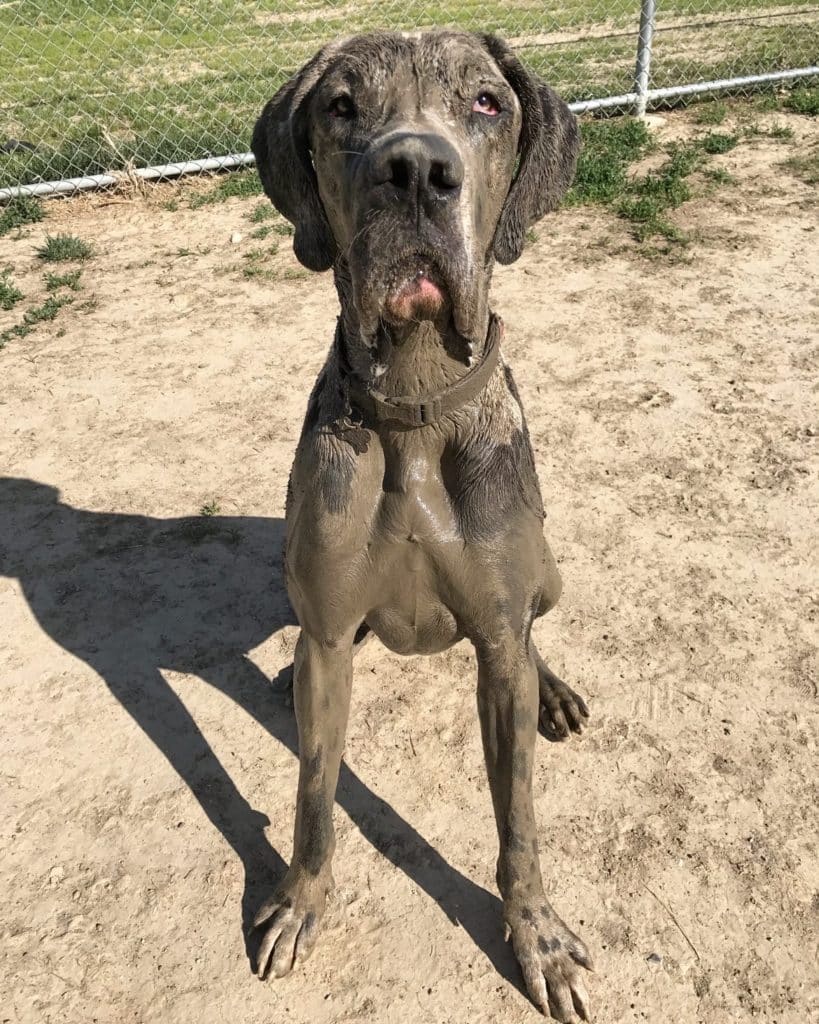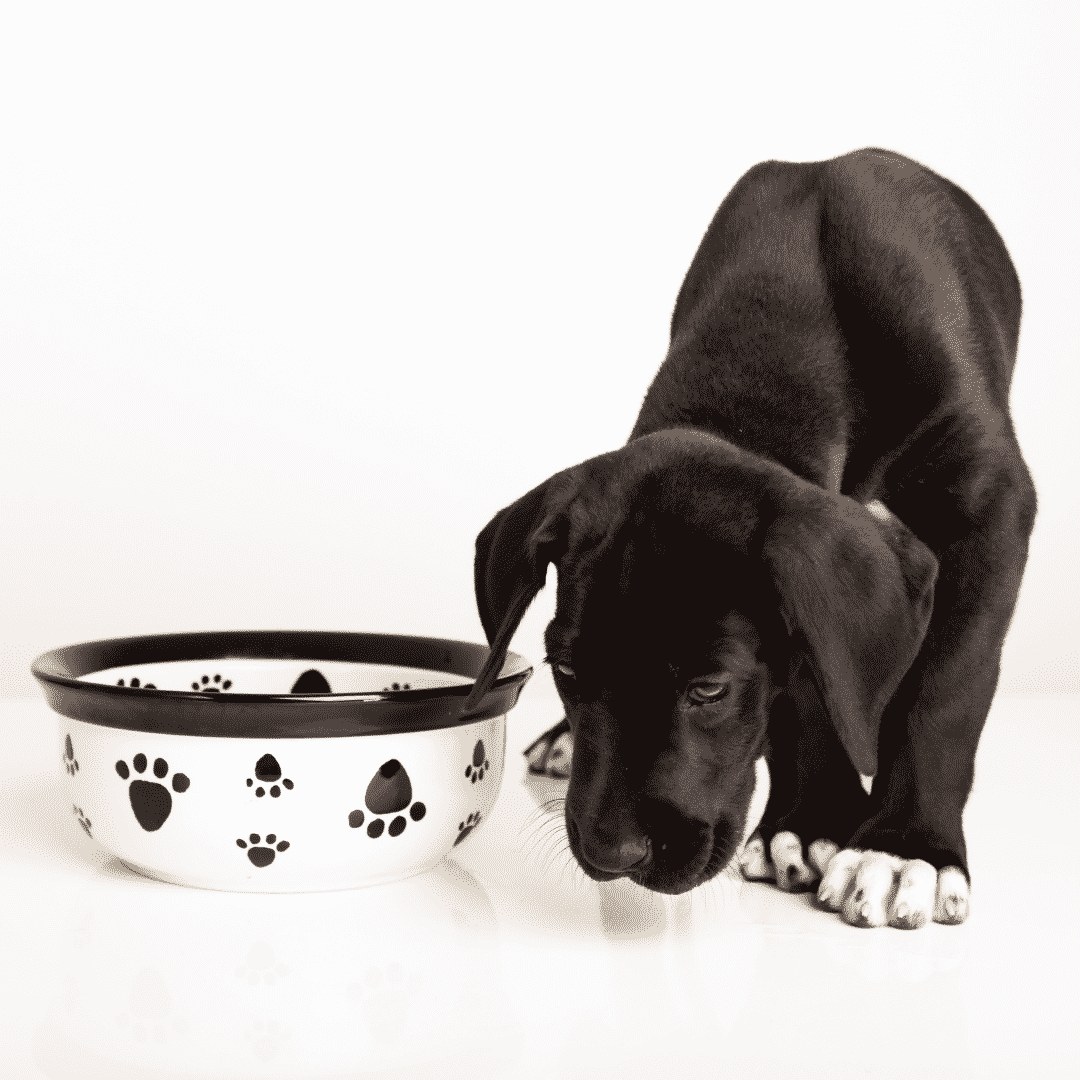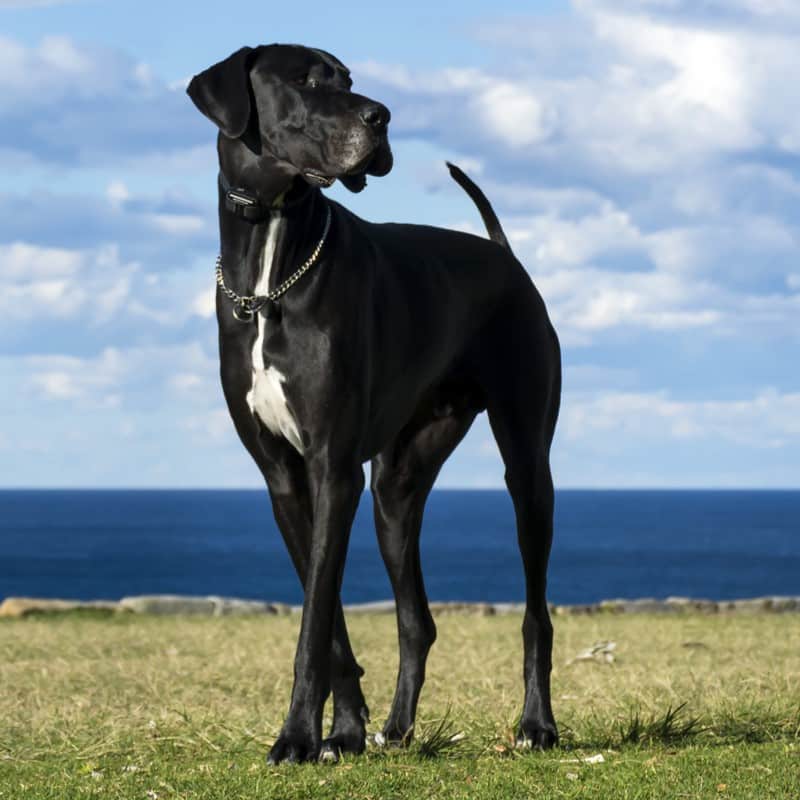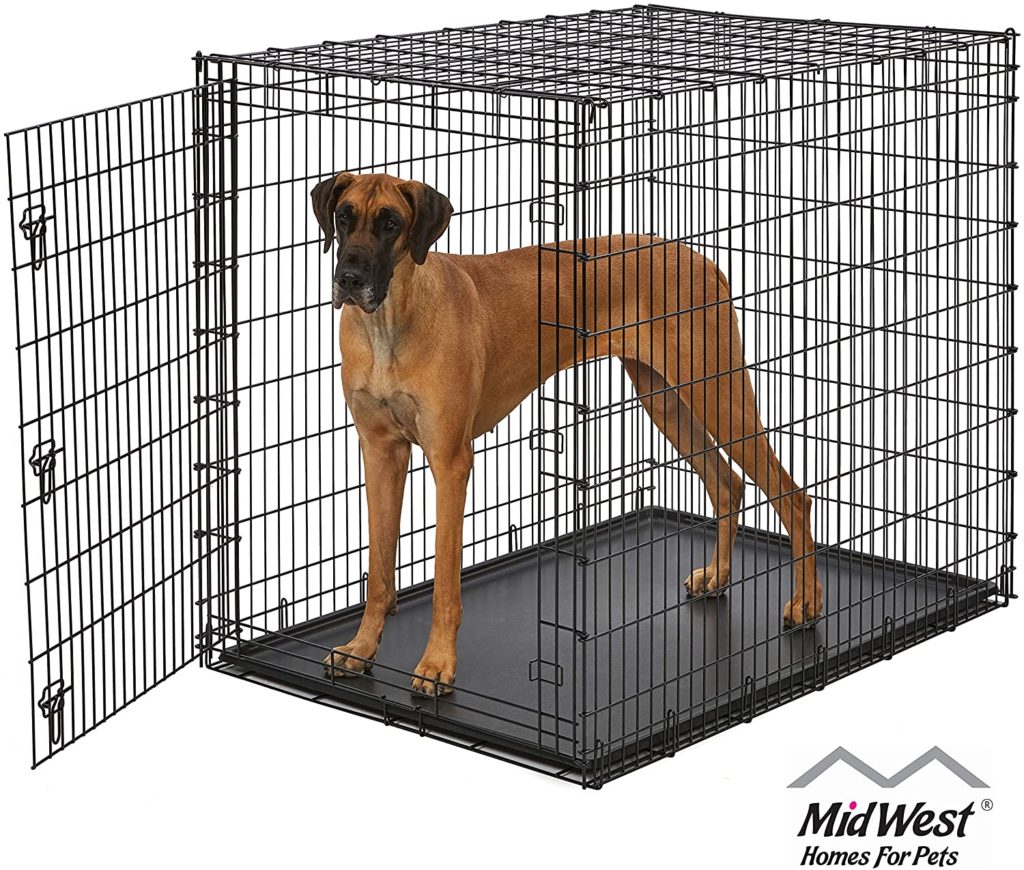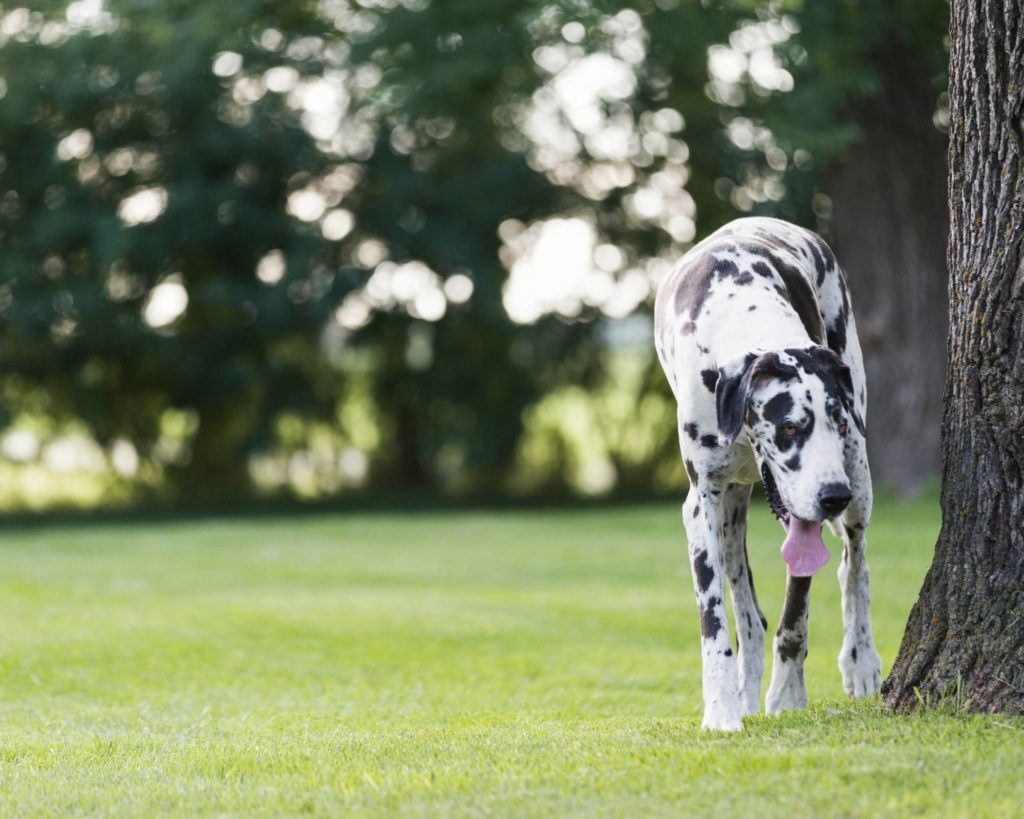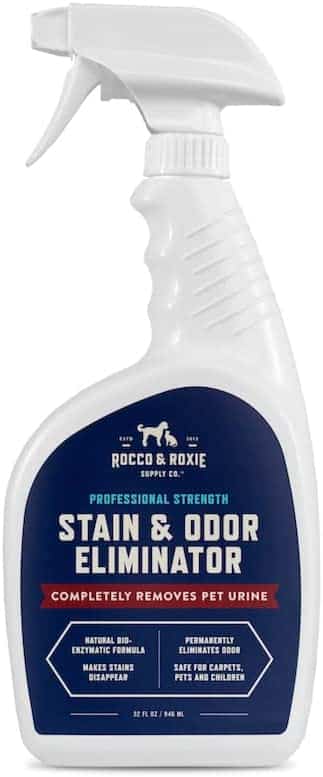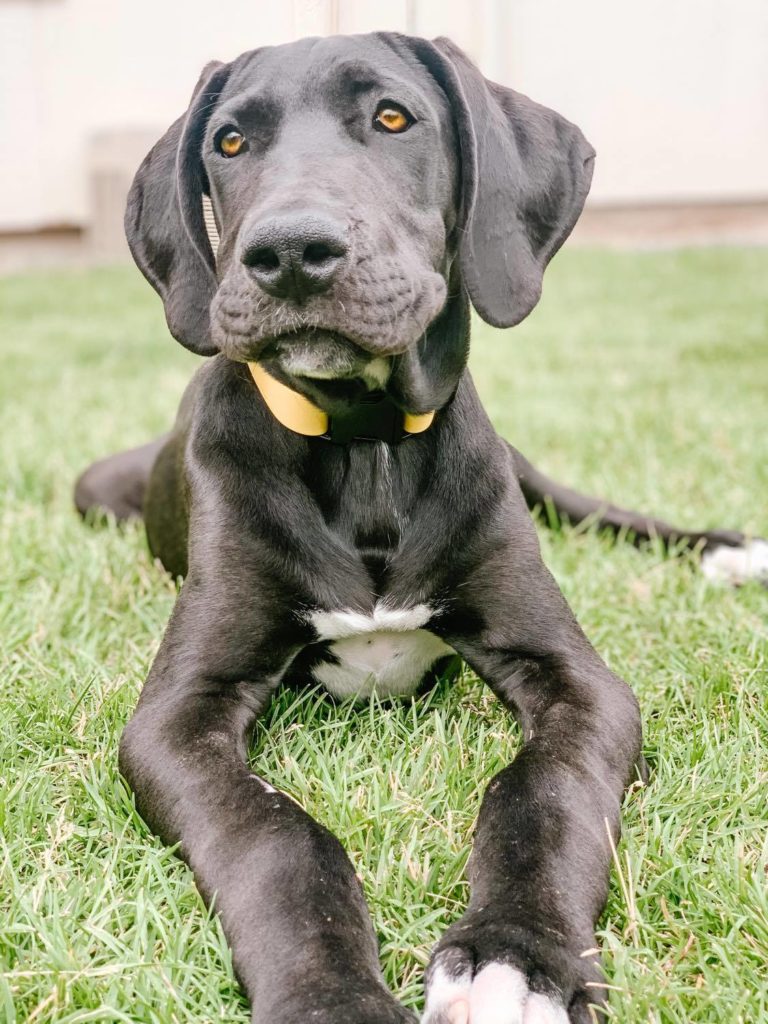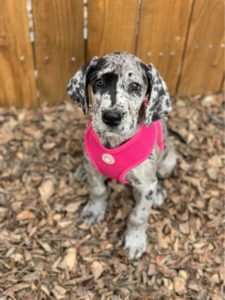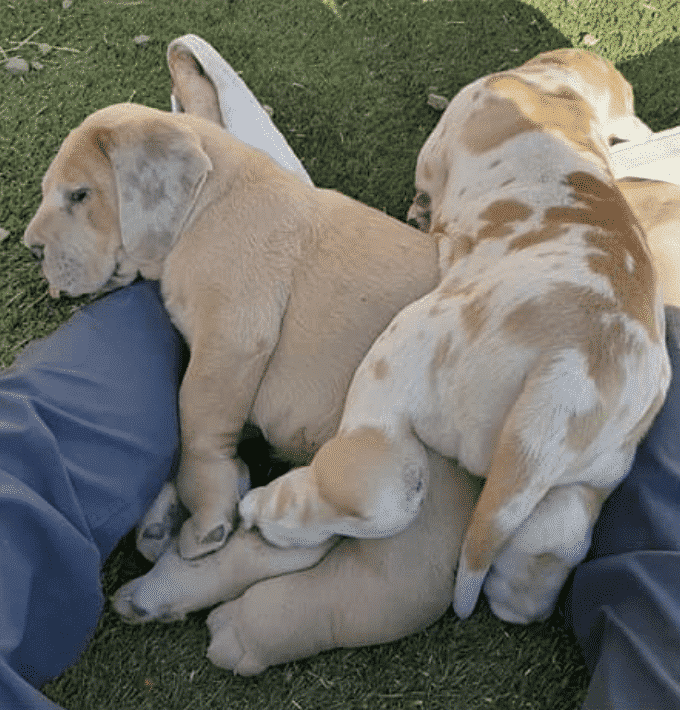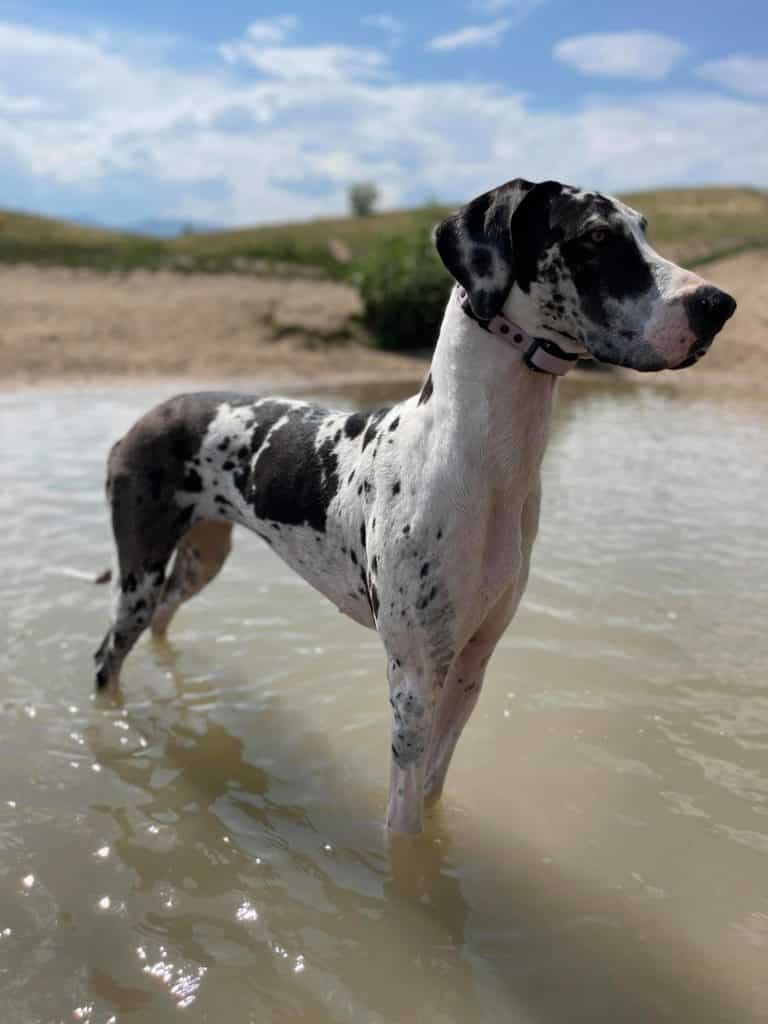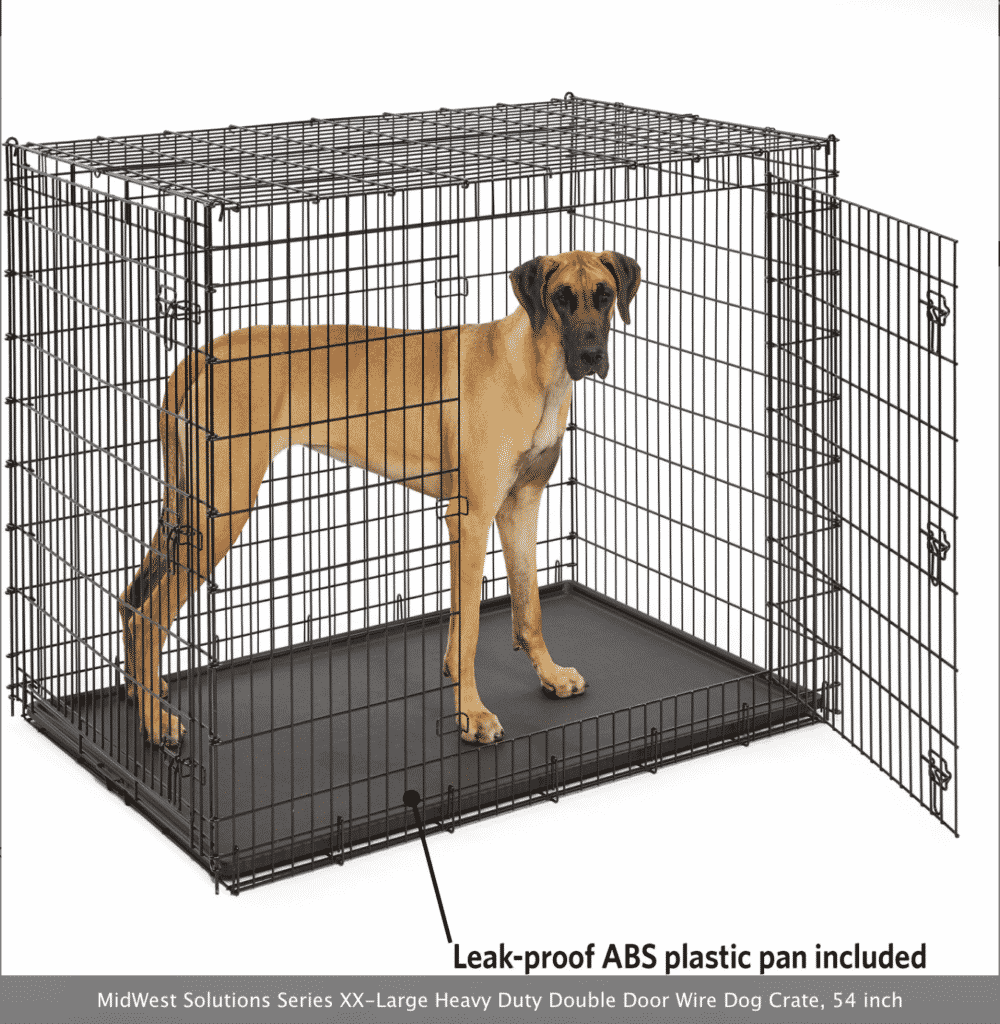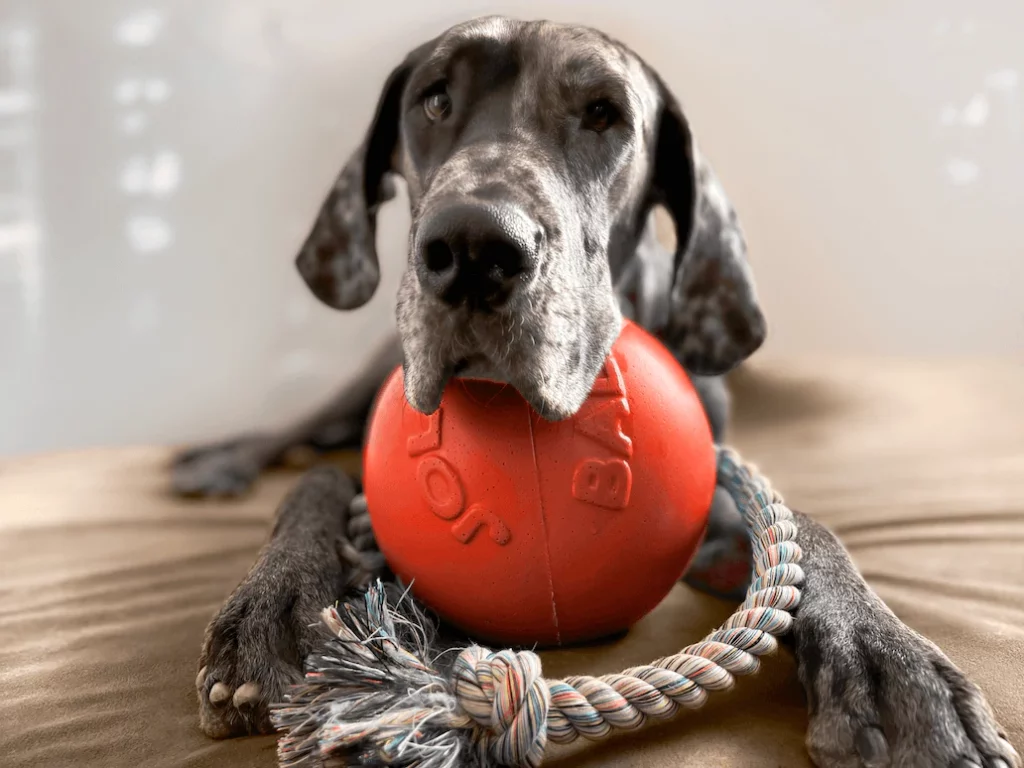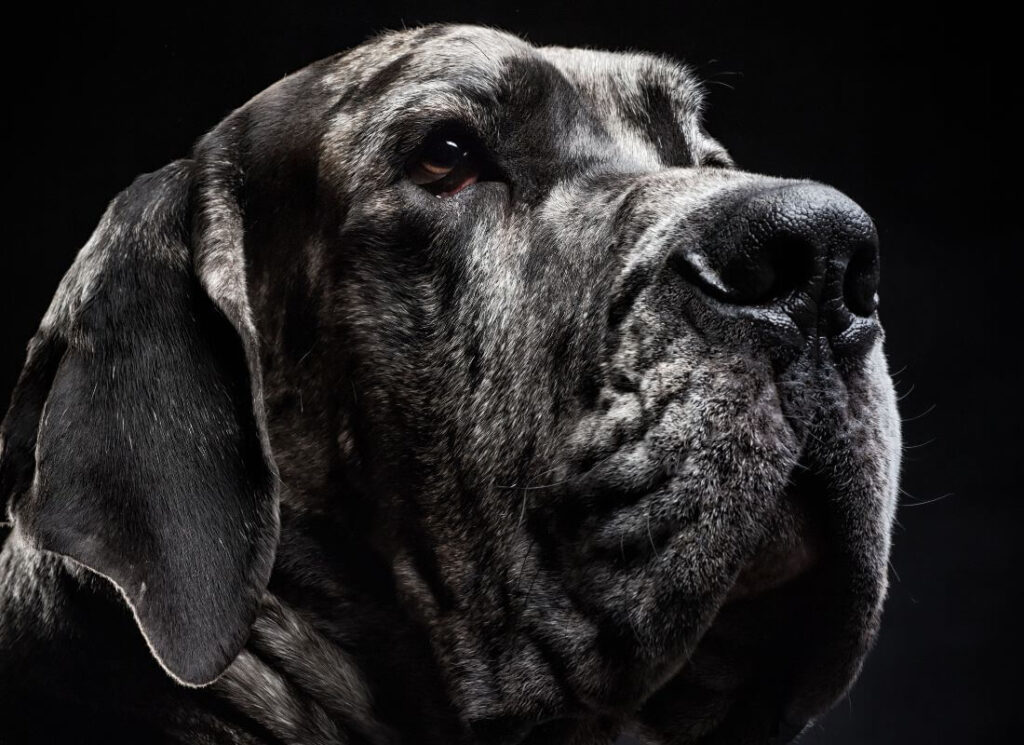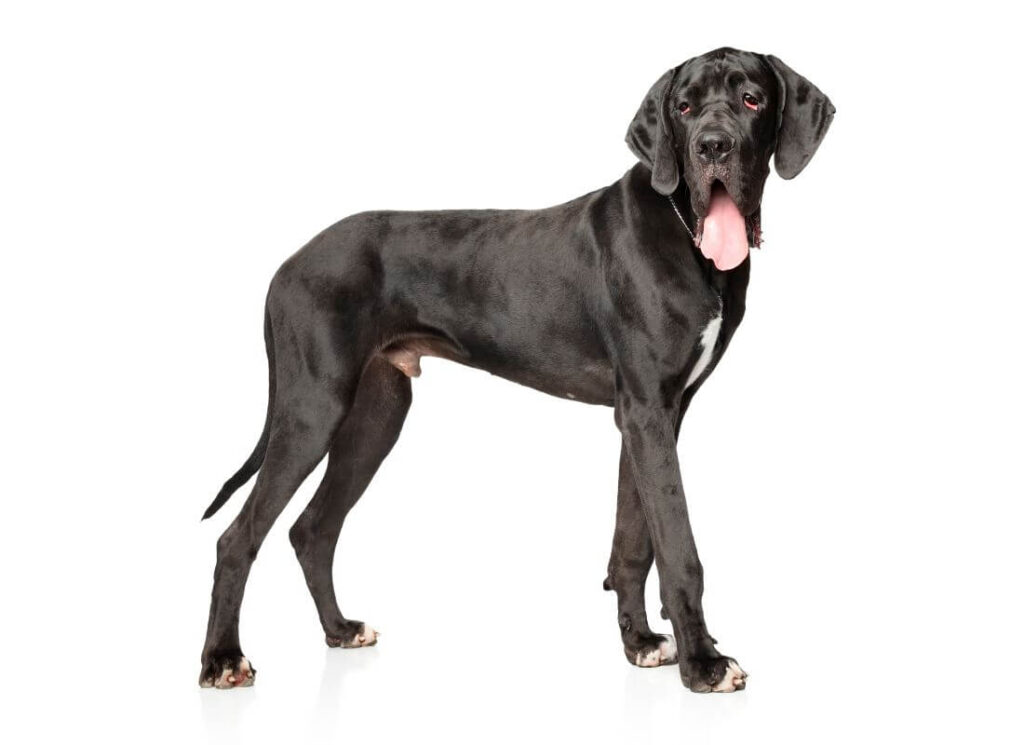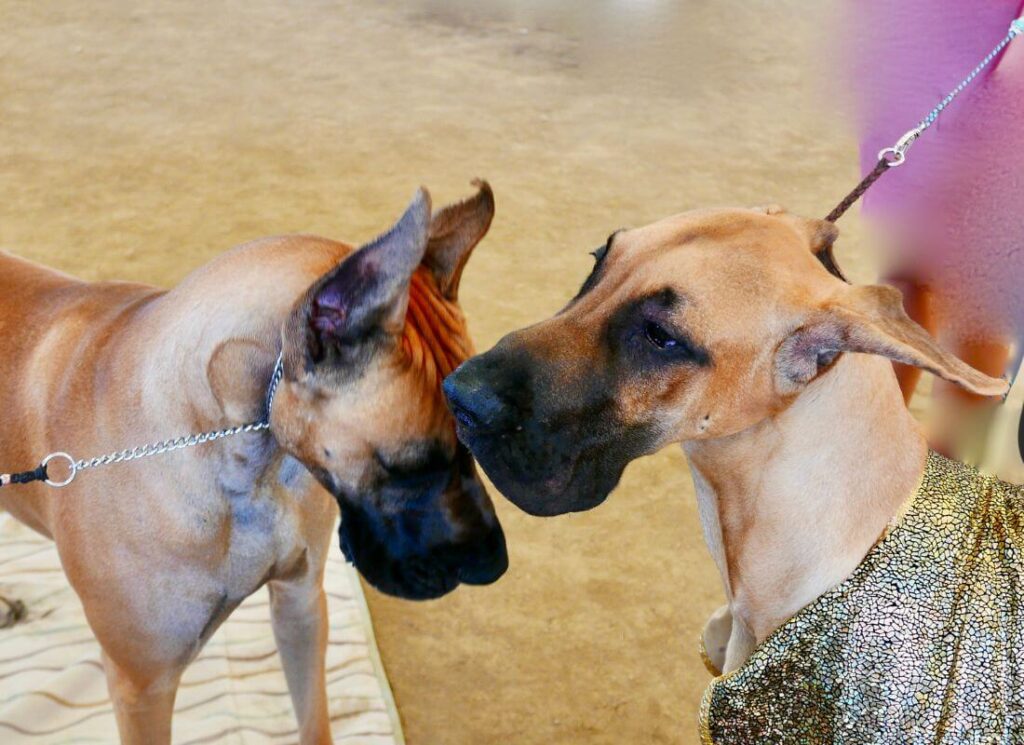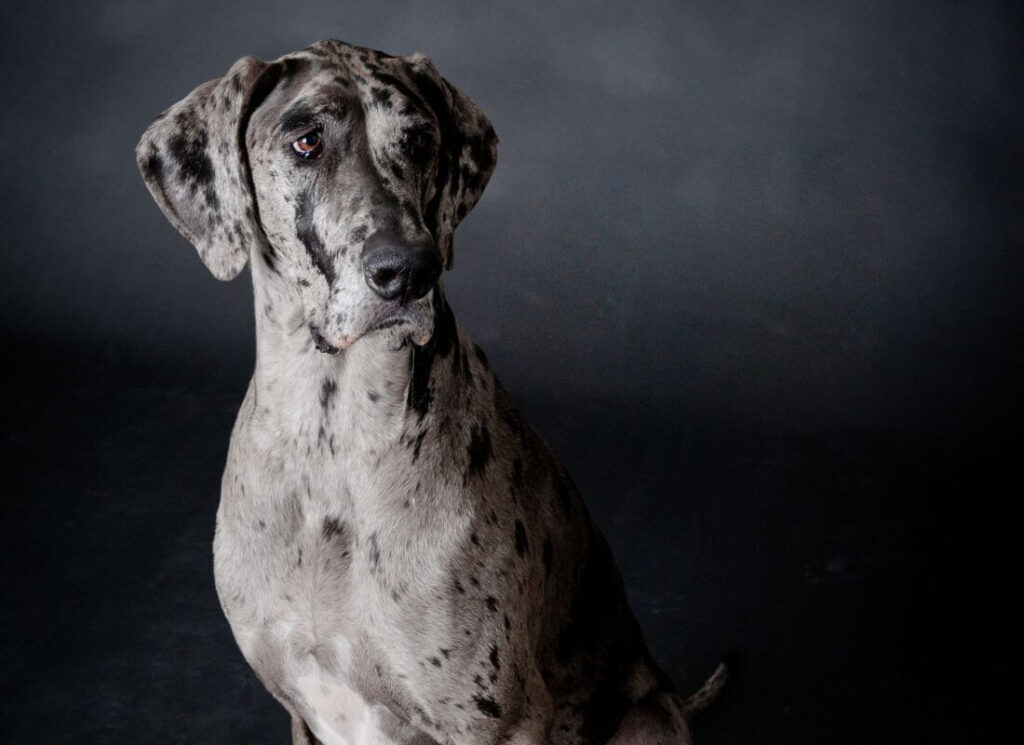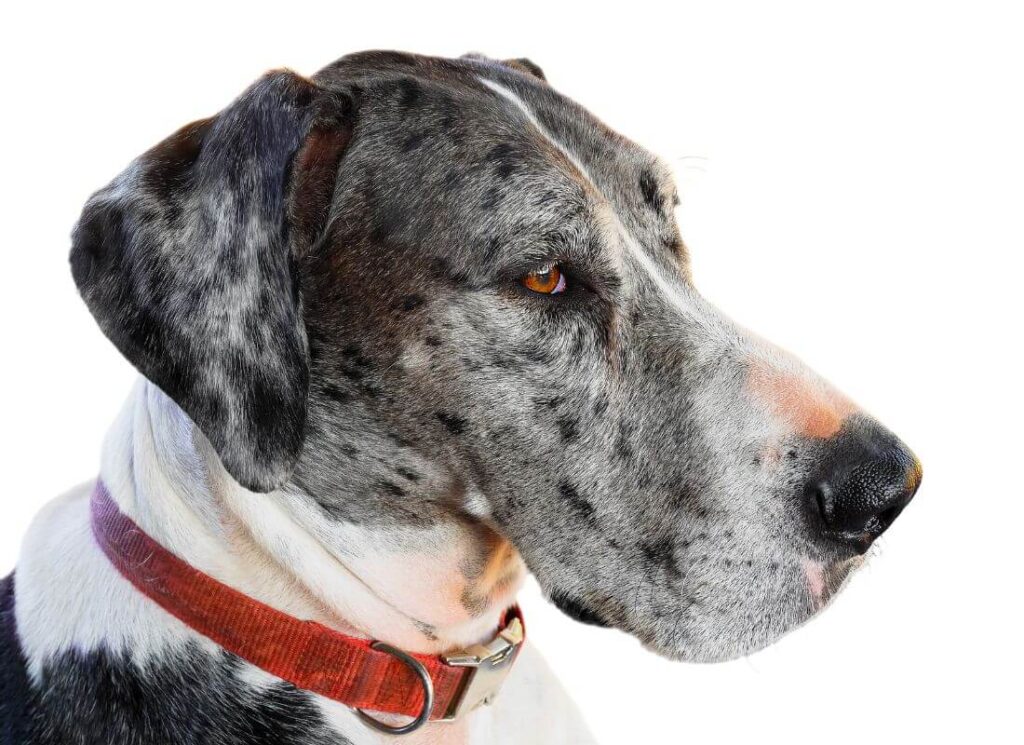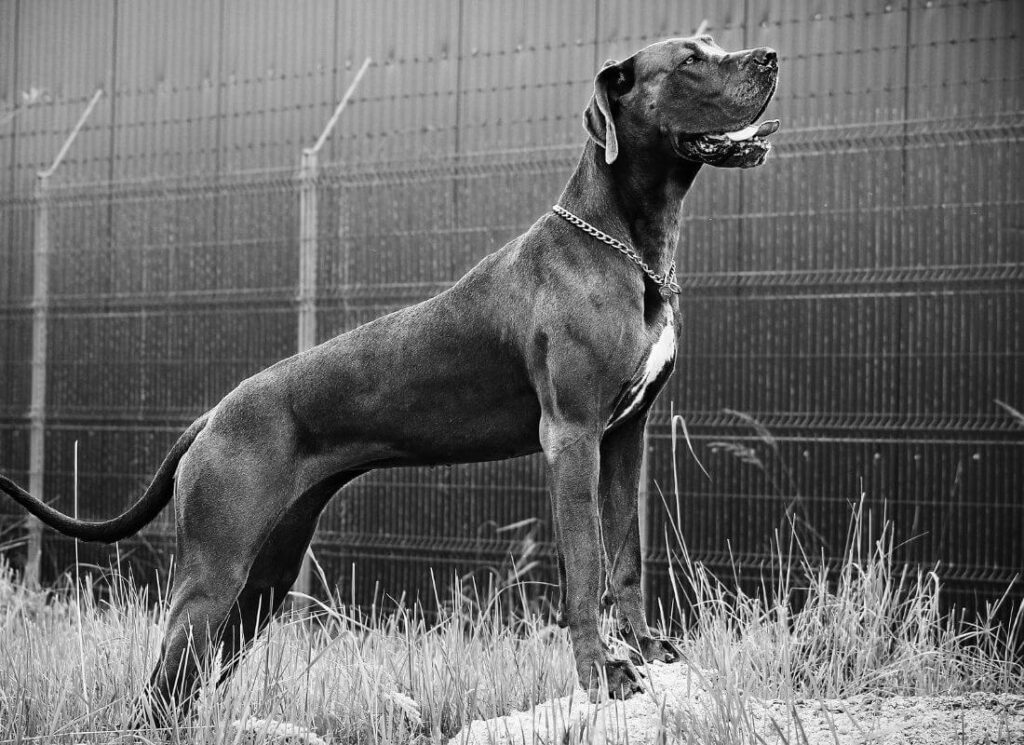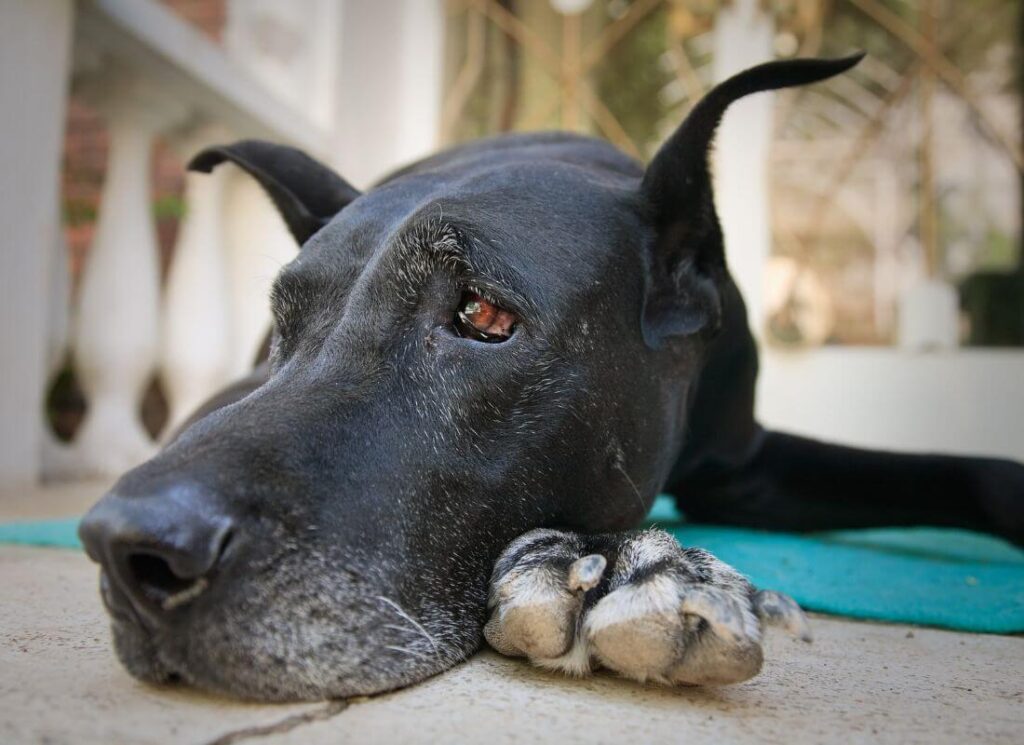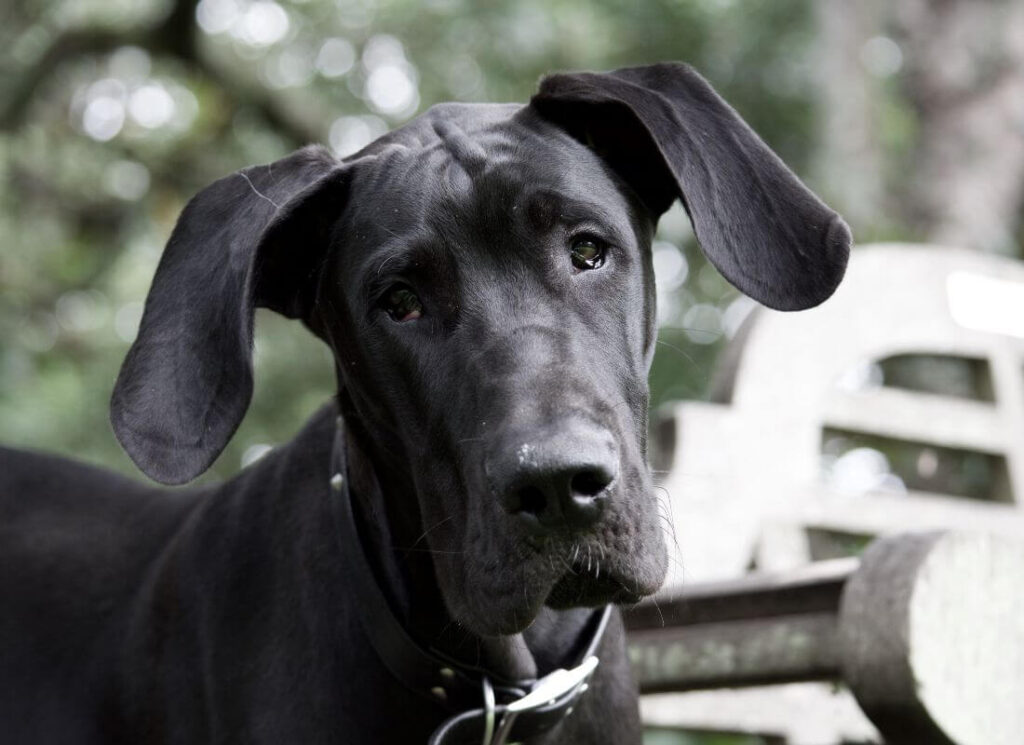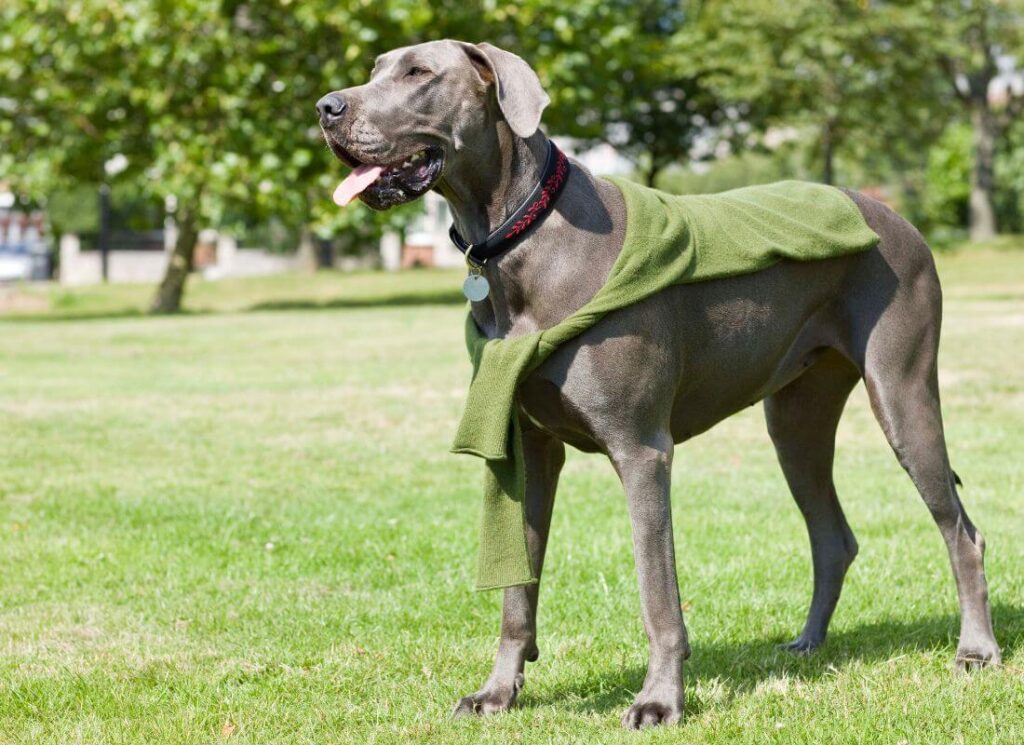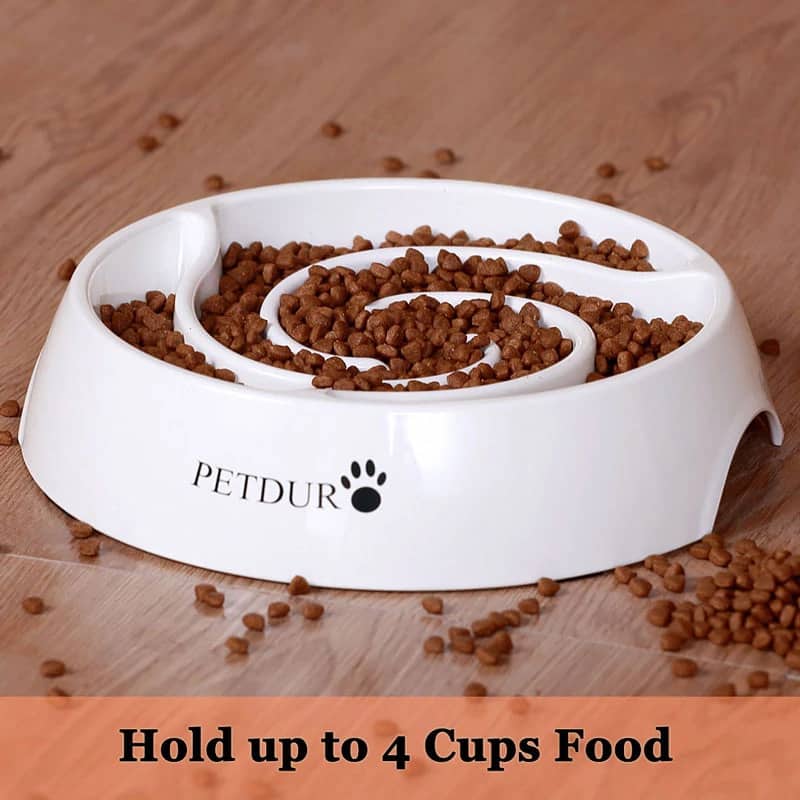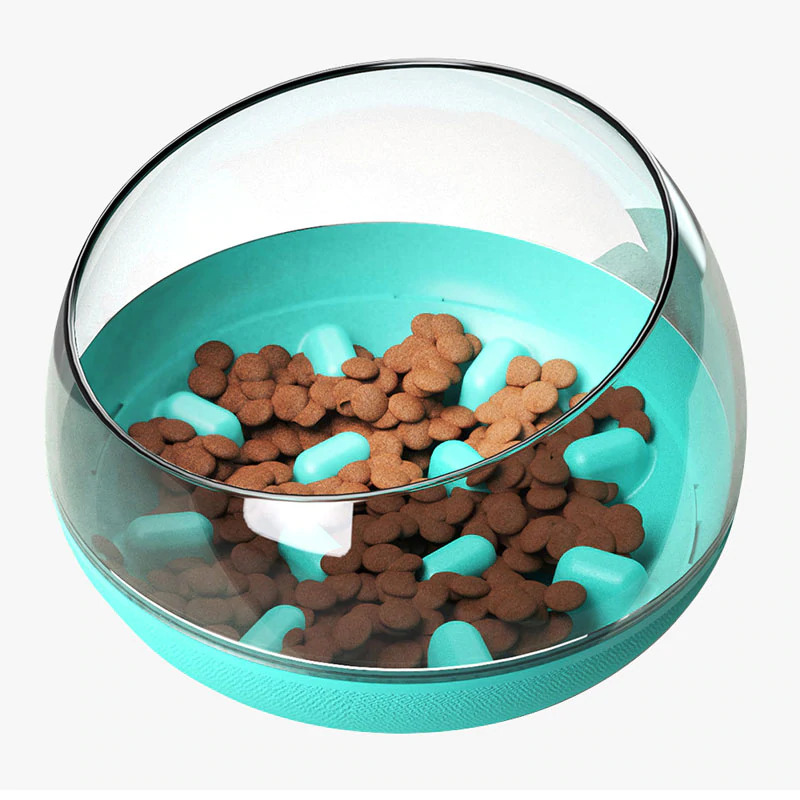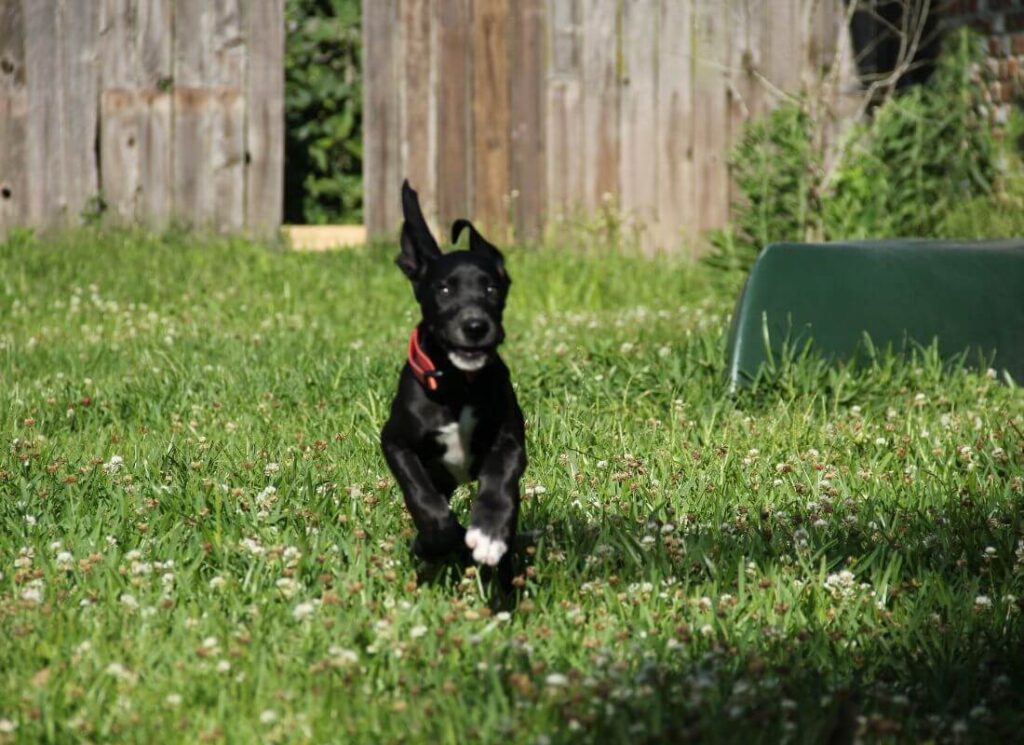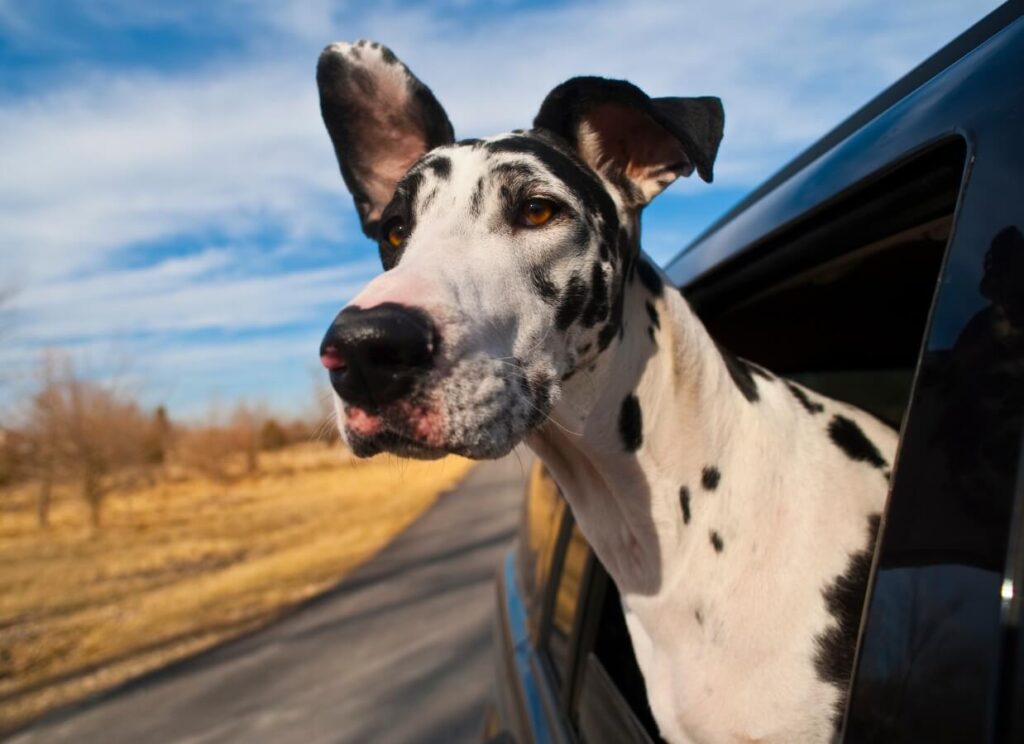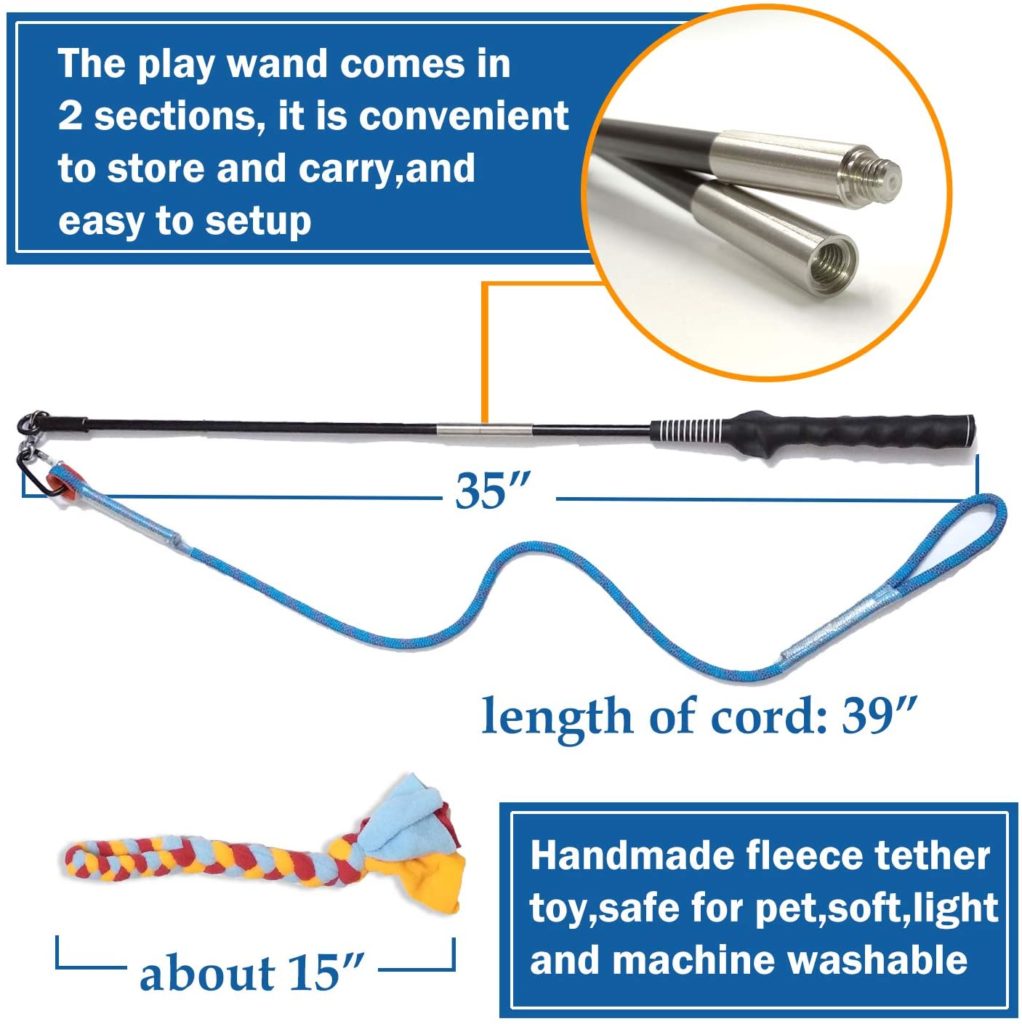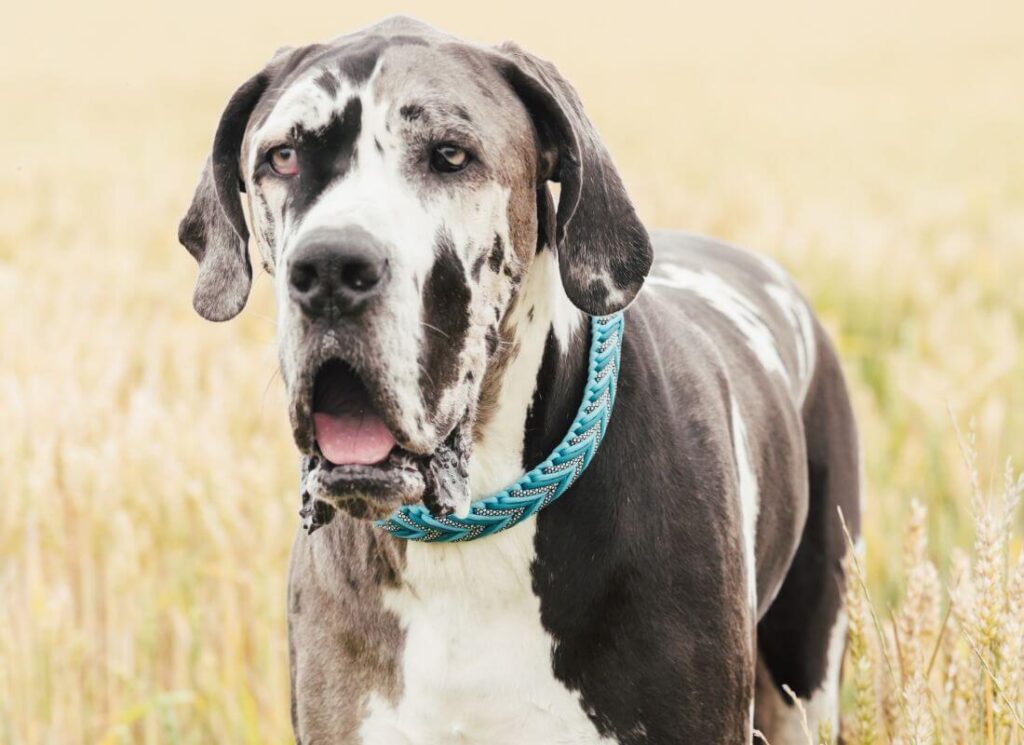Caring for Great Danes comes with unique responsibilities that not all dog ownership shares. If you are gearing up to add a Great Dane into your life- congratulations!



Every owner of a Great Dane knows that they are a special breed of dog. A Great Dane requires a lot of care and attention, and if you are not prepared to provide that, then owning one is not for you.



In this blog post, we will discuss 10 tips for caring for your Great Dane. We will cover everything from feeding them to exercising a Great Dane to keeping a Great Dane healthy. If you follow these tips, you might find some insight into keeping your Great Dane happy and healthy!
One: Caring for Great Danes Starts Young
The care of a Great Dane puppy starts when they are young.
Great Dane Puppy Growth
Starting your puppy off with proper diet and healthy, slow growth is crucial for their fundamentals.
Is My Great Dane Puppy Too Small?
Great Dane Puppy Socialization
It is important to socialize them with their surroundings early on so that they can learn how to interact properly.
Puppy Socialization
Puppy Culture: A Way to Socialize from the Start
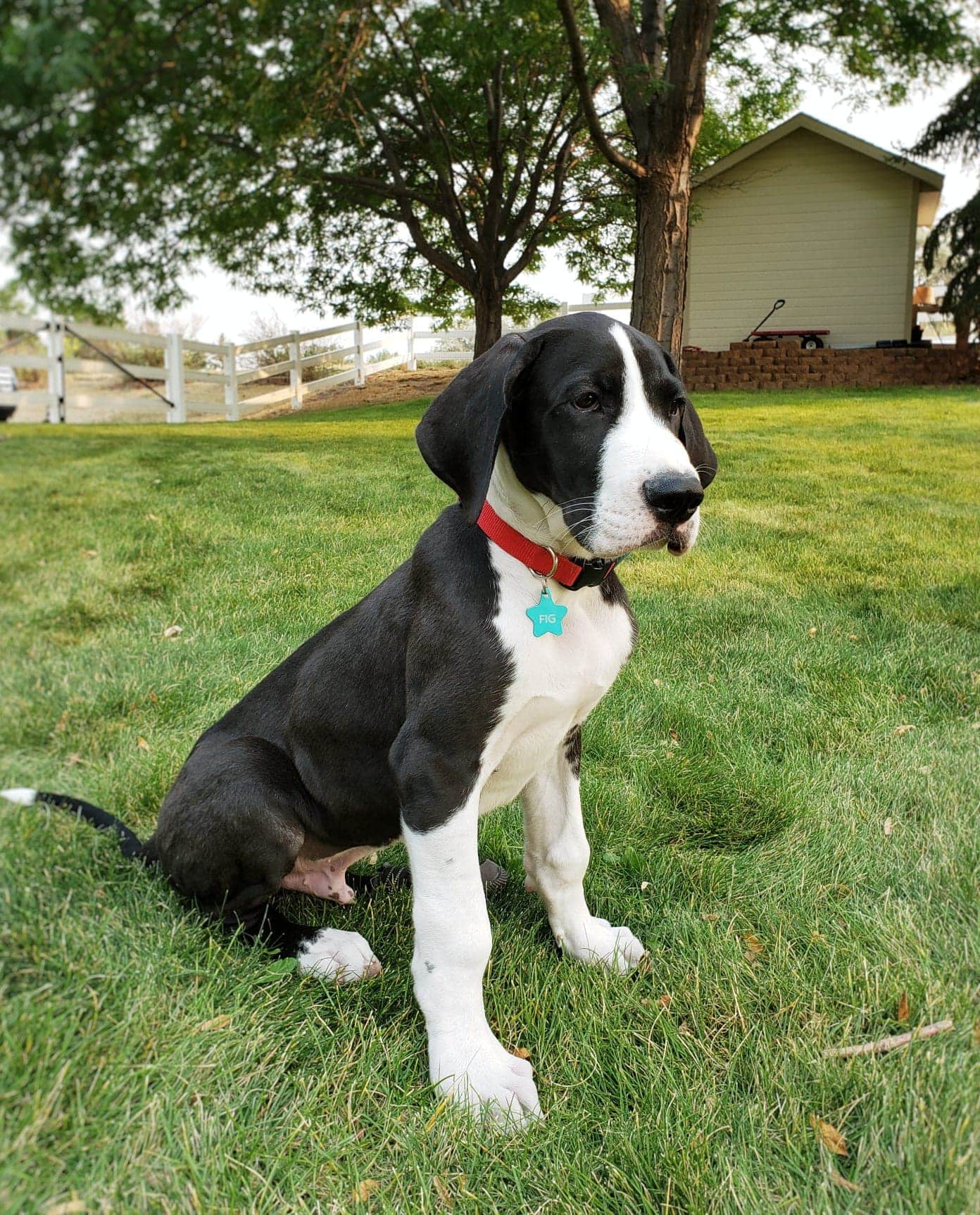


Yes, this may include other dogs, but it also includes other socialization skills such as allowing your Great Dane puppy to get to know the world without being anxious. This will make your Great Dane a more well-rounded dog and less likely to have behavioral problems later in life.
We have an abundance of socialization ideas for your new Great Dane puppy. Feel free to click here to get these ideas for your Great Dane puppy- you may even want to try some of the ideas for your other dogs!
The Best Chew Toys for Great Dane Puppies
Great Danes are very big dogs, even when they are a little puppy. As they become older dogs, they develop larger jaws than most breeds.
As little pups, Great Danes and other puppies really love something to snuggle. We will link some that have great reviews, the Snuggle Puppy:

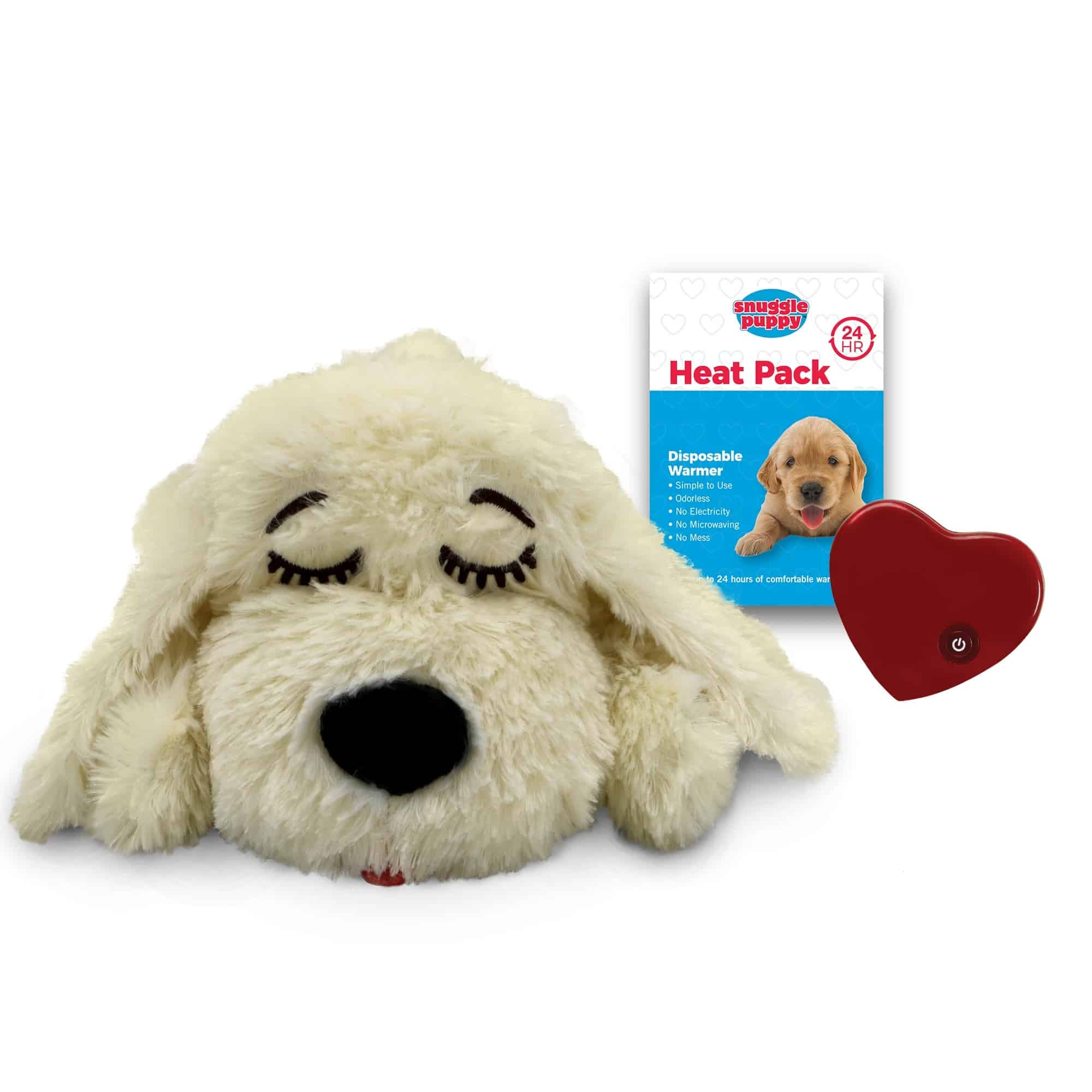
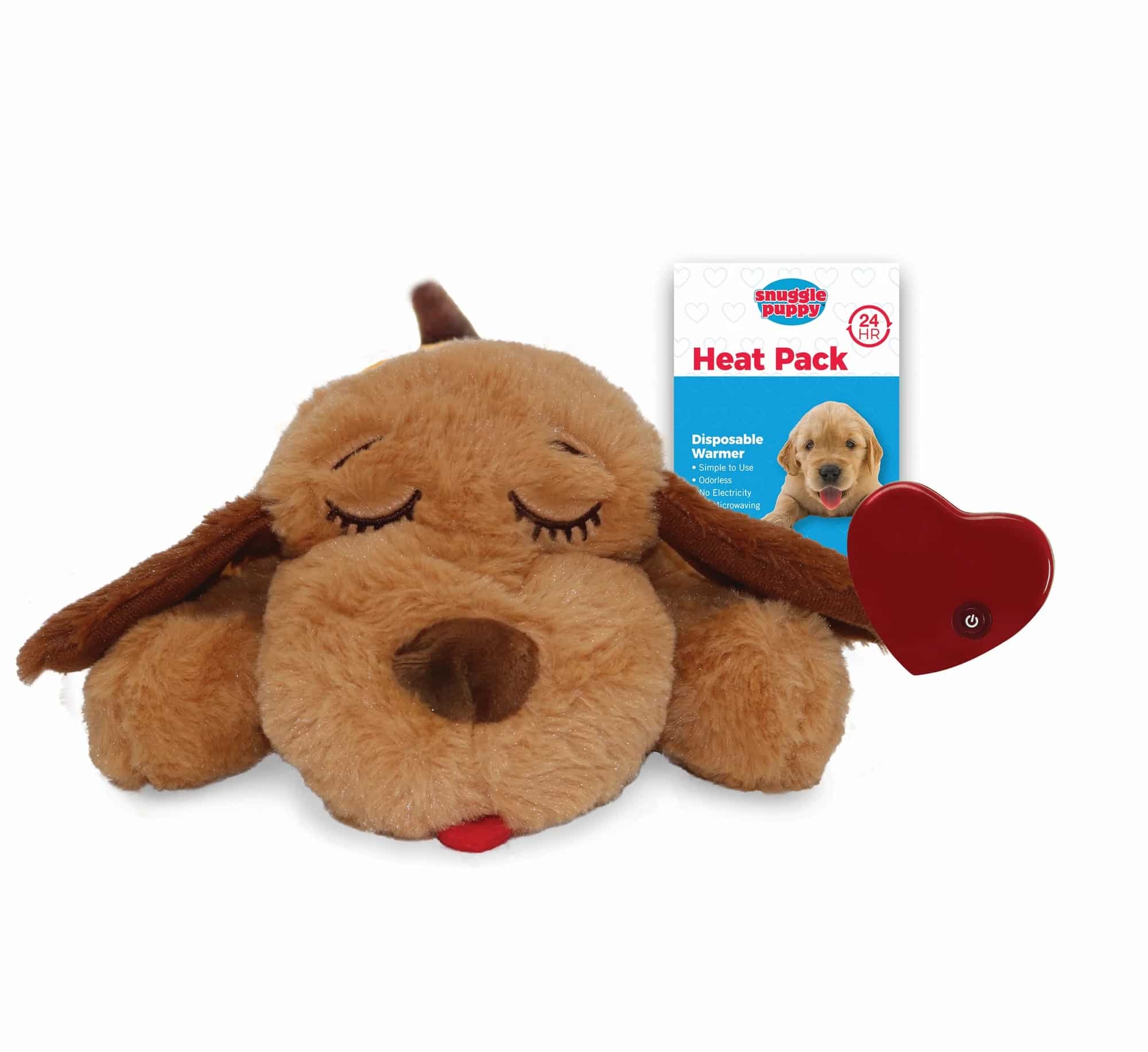
When you have a puppy, make sure to gear up with a slew of toys made for Great Danes so that you can direct the chewing to a safe and appropriate place. A Great Dane that is not given the right amount of appropriate avenues of chewing can become destructive, and their jaws are pretty strong, so they can easily chew through comforters, beds, and even sometimes furniture.
We have a guide of some of our favorite Giant Breed toys for your convenience.
Work on Separation Anxiety from a Young Age with a Great Dane
Great Danes can be known to develop separation anxiety when they are both a puppy or an adult. A Great Dane LOVES to be with their owner- sometimes more than other breeds. They are a loving dog breed and sometimes even referred to as a ‘Velcro’ dog. Here are some means of combatting anxiety:
To combat this anxiety with your Giant Breed, start working on separation anxiety from a young age. This means getting them used to being away from you for short periods of time and gradually increasing the length of time as they get older.
Teach Young Kids to Respect Large Dogs
It is extremely important for ALL dogs to respect children, and ALL children to respect dogs. You hear about Great Danes being gentle giants, however the truth is your clumsy Great Dane is not always going to be a Gentle Giant.

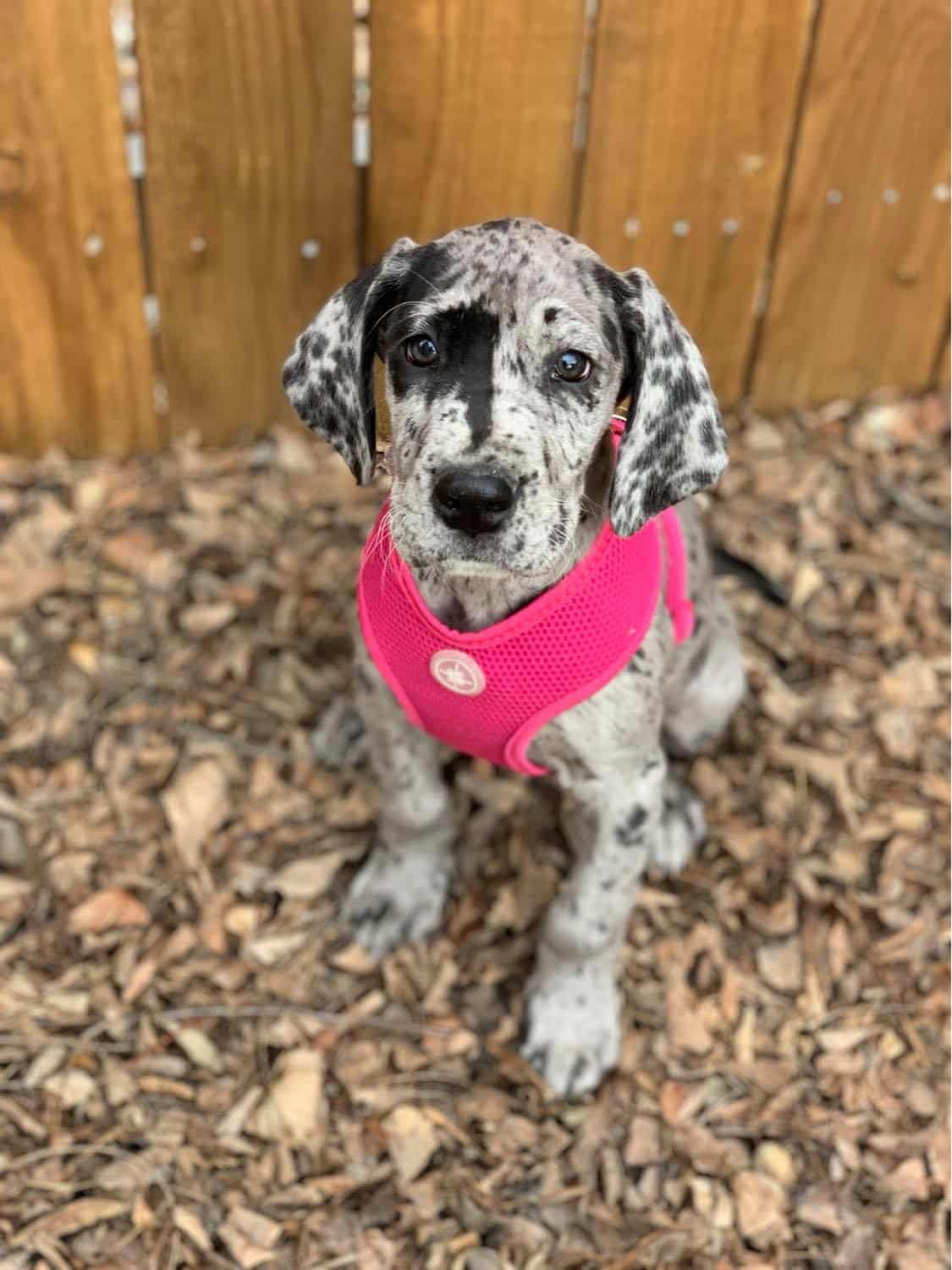
Great Dane dogs are very powerful- and their tails are very strong. Sometimes even just wagging can hurt young children. It is important to teach your dog from puppyhood what it means to respect your children, AND vice versa.
Is It Safe for My Kid to Sit or Lay on My Great Dane?
The answer to this question is absolutely not. Your Great Dane should never be sat on or laid on by a child. Even if they are a calm dog, their bones are not meant to support the weight of a child and it could cause serious injury.
If you have young children in your home, we recommend working intensely with both the child and the Great Dane to establish strict boundaries for both parties.
Crate training your Great Dane is a great way to ensure that both kids and Great Dane dogs remain safe while unsupervised.
How to Crate Train a Great Dane Puppy
Crate Training: The Best Crates for Great Danes
New Puppy Checklist
BONUS POST: Is my Great Dane too Skinny!?
Here are some of our favorite crates for a Great Dane:
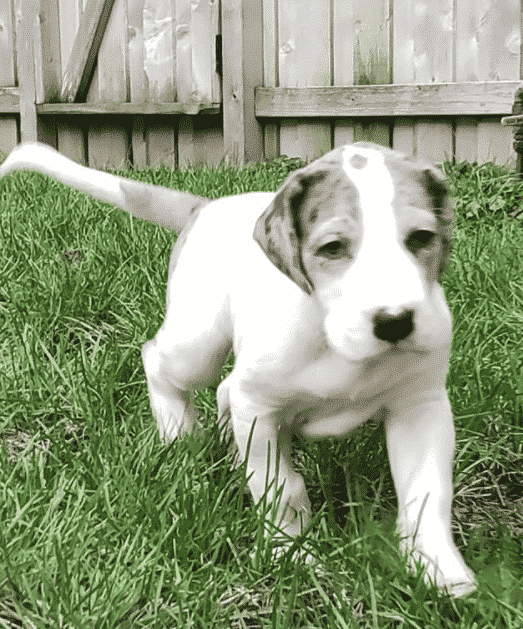
The Best Crate for a Great Dane Puppy: Click Here
Is It Okay for a Child to Pull on the Tail of a Great Dane?
Time and time again we see children pulling on the tail of a Great Dane, sitting on their backs and even doing things that can cause health problems.
Remember: a Great Dane CANNOT communicate verbally- if you notice lip smacking, tail tucked, or a dog trying to move away- these are all signs that the dog is uncomfortable.
Do not let your child continue if the dog is showing any of these signs and please teach them why it is important to never do these things to any dog, not just Great Danes.
Your dog’s life matters- do not put them in ANY position to harm a child.
Two: Feeding Your Great Dane
As any Great Dane owner knows, feeding your dog a high quality diet is essential for their health and wellbeing.
However, when it comes to Great Danes, this is especially important. Due to their large size, Great Danes require a diet that is correctly formulated in order to make sure that they grow correctly.
Should I Feed My Puppy ‘Puppy Food’ or ‘Adult Food’?
Depending on the contents of the food itself, your Great Dane puppy might require puppy food or regular adult dog food.
We have further information regarding this topic here:
Supplements for Great Dane Dogs
In addition, as they grow, they also may need plenty of vitamins and minerals to support their bones and joints. While you can find high quality dog food at most pet stores, you may also want to consider giving your Great Dane natural supplements such as fish oil or glucosamine. By doing so, you can ensure that your dog is getting all of the nutrients they need to stay healthy and happy. Here are some of our favorite supplements for a Great Dane, linked for your convenience:
Three: Great Dane Weight Matters to your Great Danes Health
Keeping your pet at a healthy weight is important for their overall health and wellbeing.
Miniature Great Danes: The Pocket Size Version
Is My Dog ‘Filling Out’ or Getting Fat?
Obesity in Great Danes: Fat Danes Face Serious Health Risks
Unfortunately, weight gain is a common problem for Great Danes, and it can lead to a host of health issues.
For example, extra weight puts strain on the joints and muscles, making it difficult for your Dane to move around. In addition, extra weight can lead to respiratory problems, heart disease, and diabetes.
Thankfully, there are a few things you can do to help your Dane maintain a healthy weight. For starters, make sure they get plenty of exercise. Secondly, feed them a healthy diet that is formulated for large breed dogs. Finally, monitor their weight regularly and consult with your veterinarian if you see any signs of weight gain.
Four: Large Breed Dogs and Consistent Training
If you’re considering getting a large breed dog, there’s one thing you should know: you’re in for at least an hour of training every day while they are rapidly growing. (Of course- this number changes depending on your dog’s temperament, how they were bred, and their personality!)
Large breeds are not necessarily difficult to train, but even the most obedient dog will need consistent reinforcement to stay on the right track.
Training Mistakes
9 Reasons to E Collar Train Your Great Dane Puppy
Why is Leash Training so Hard?
But don’t let that discourage you – the rewards of owning a large breed dog are more than worth the effort. We are extremely supportive of the ethical use of E Collars to train your Great Dane. For more resources, click below.
With patience and positive reinforcement, you’ll be able to bond with your furry friend and create a lifetime of memories. So go ahead and add a big dog to your family – just be prepared to put in the work.
Are you interested in seeing some of the most common training mistakes we see with large Great Danes? Be sure to check out this blog:
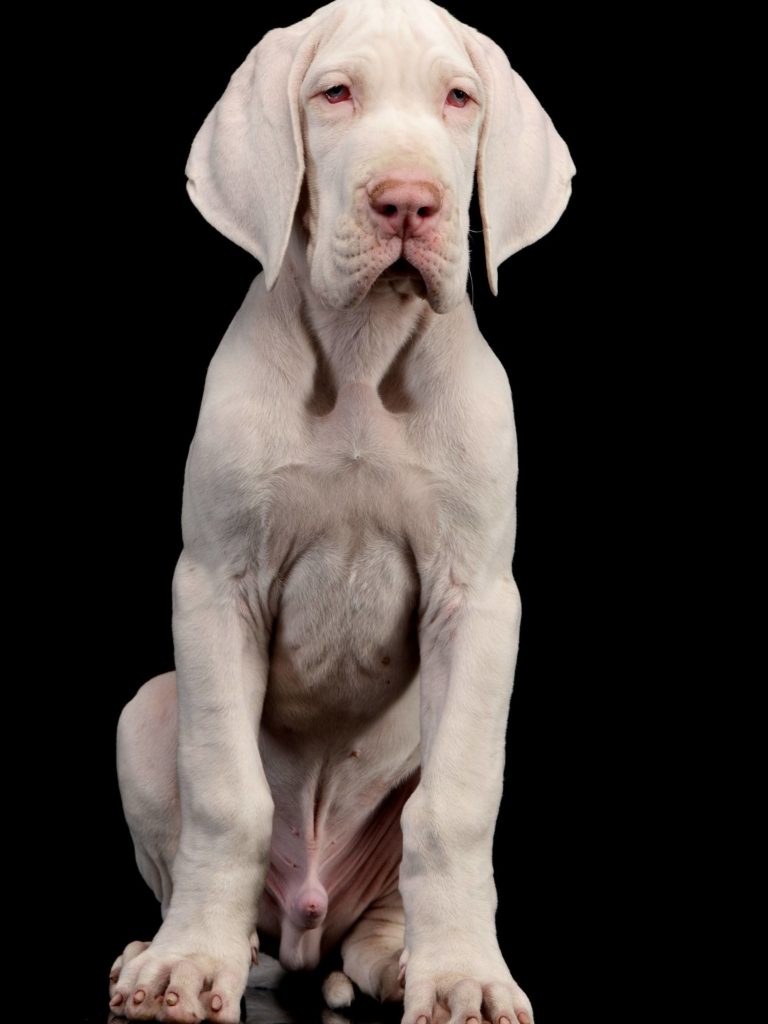
5 Common mistakes you may be making when Training Your Great Dane
Five: Great Dane Health Problems
Unfortunately, as a Great Dane lover, it is sad to admit that Great Dane dogs as a whole can be relatively prone to health conditions.
Arthritis in Great Danes
Laser Therapy for Joint Pain
How to Help a Dog with a Broken Leg
What is Bloat?
The most common problems we see are related to the bones and joints, including hip bone issues and elbow dysplasia. In addition, Great Danes are also at risk for bloat, which is a potentially life-threatening condition that affects the stomach. Great Dane dogs can also be prone to some types of cancer.
However, with the right knowledge, you can be best informed to prevent certain diseases in your dogs and seek veterinary care when appropriate.
Great Dane’s Ears
A Great Dane can be susceptible to ear infections. Ear infections in Great Dane dogs can typically be managed at home, but as with all things is very dependent on the dog and severity.
Our favorite method of ‘at home treatment’ for ear infections is Xymox. See below for a link to purchase for your own dogs.

Xymox is our absolute FAVORITE cleanser if your Great Dane has yeast or inflammation in its ears.
Great Dane Ear Cropping
One way some people suggest helping to prevent ear infections is through ear cropping. Ear cropping is a procedure in which the tips of the ear are removed.
Ear Cropping in Great Danes
Ear Cropping: The Two Sided Debate
How to Tape a Cropped Dane’s Ears
This helps to shorten the ear canal and reduce the risk of infection. Great Dane dogs with cropped ears experience no pain during the procedure, WHEN / IF it is done by an ethical and humane veterinarian.
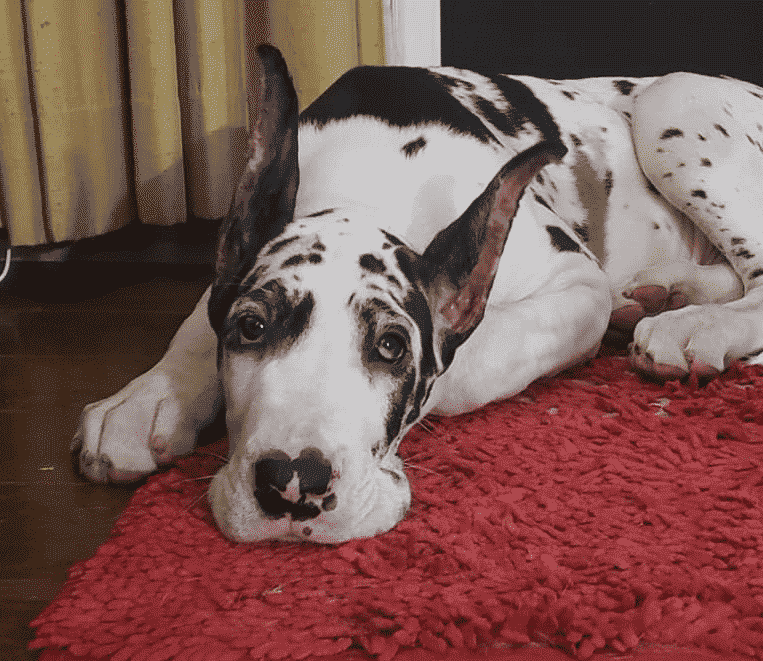
Great Dane Ear Cropping: Read More Here.
However, Great Dane ear cropping is a controversial practice, and it is important to speak with your veterinarian before having the procedure done.
Great Dane puppies typically have their ears cropped between 8 and 16 weeks of age. If you are considering ear cropping for your Great Dane puppy, be sure to do your research and talk to your veterinarian to make sure it is the right decision for your dog.
Bad Breath
Stinky breath in dogs can be indicative of a number of different problems. The most common cause of smelly breath is plaque and tartar buildup on the teeth. This can lead to gum disease, which is painful and can cause other problems if left untreated. Ensure you are providing a good food and feeding your Great Dane a probiotic, which could help to provide healthy gut flora, ultimately cutting down on the dog ‘breath’ smell.
Underlying Medical Causes
Other causes of smelly breath include kidney disease, liver disease, diabetes, and respiratory infections. If your dog has gross breath that does not go away with brushing, be sure to take them to the vet to rule out any underlying medical conditions.
Using a DNA kit such as an Embark can help you determine the genetics of your dog which may lead you to faster answers.
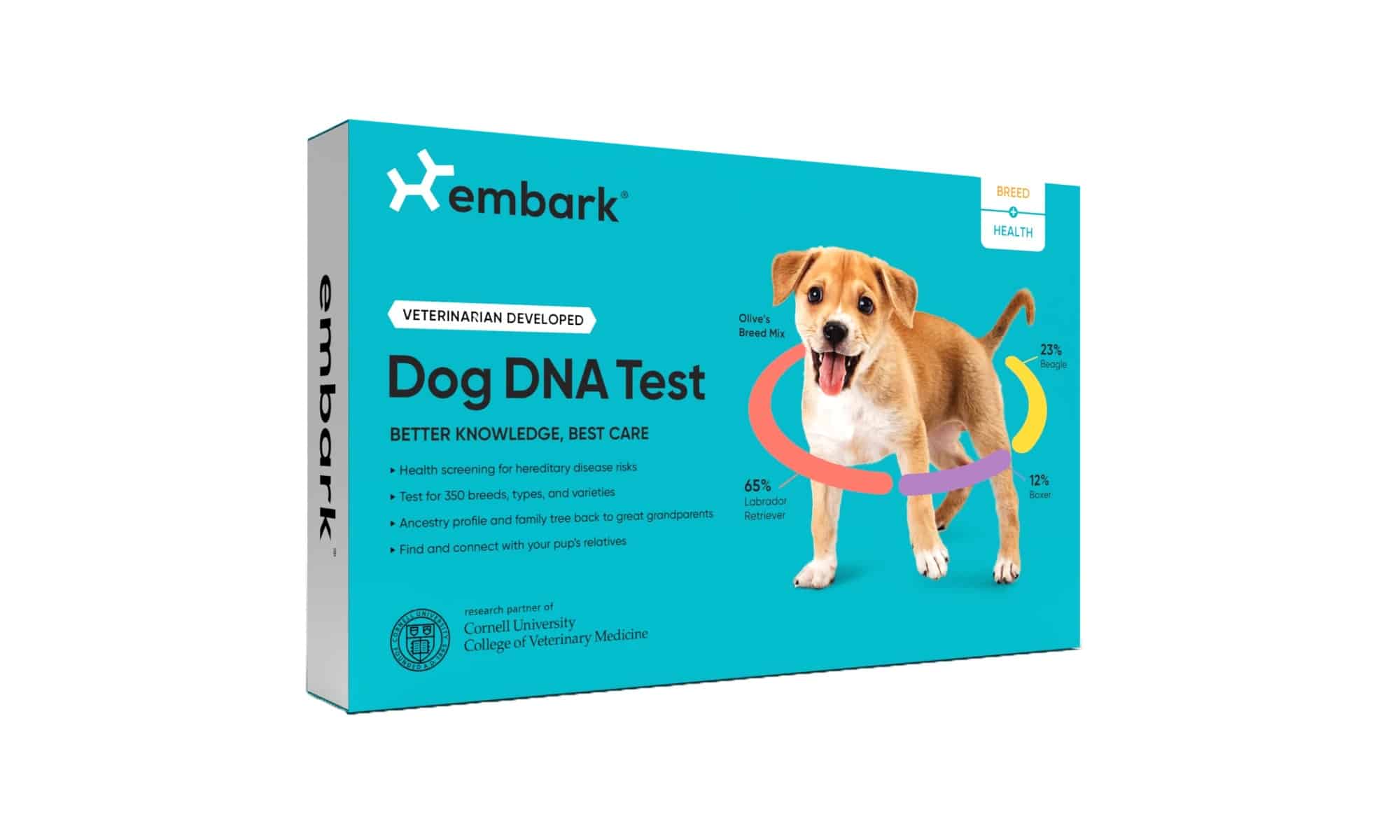

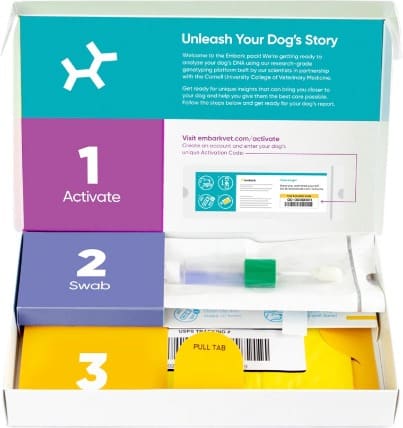
Also, however, some dogs might just have stinky breath here and then. Many have reported that by feeding raw food it significantly cuts back on the bad breath in their dog / dogs.
Great Dane’s Drool
Great Danes are notorious for their drooling, and it is one of the things that people love about them! If your puppy or adult dogs are drooling, just know that it is NOT a health concern, unless they seem to be excessively drooling, panting, fevered or have gray gums.
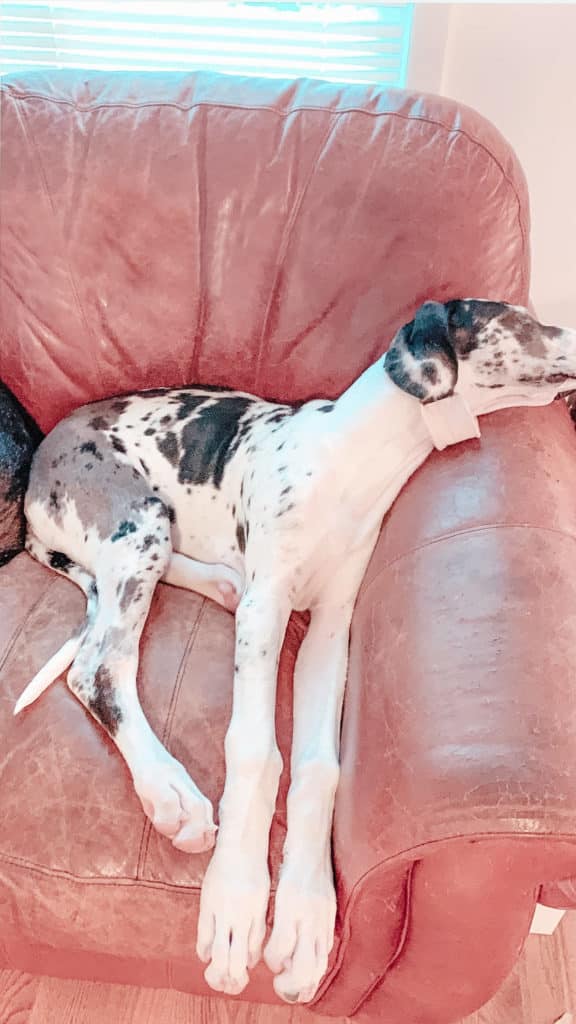
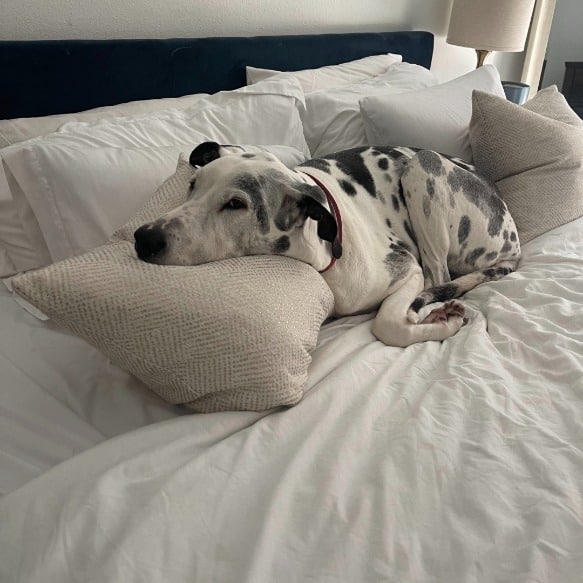
But why do they drool so much? The answer lies in the anatomy of how a Great Dane is built. They have big jaws, which means that when they are excited or eating, their saliva can’t always make it all the way to the back of their throat before dripping out of their mouths.
While there is no real ‘cure’ for this drooling habit, Great Dane dog owners typically become adjusted- and pretty dang fast too! Great Dane dogs usually just give better kisses!
Drool is all apart of being in the Great Dane club! No- not the American Kennel Club- the Great Dane Drool Club- its not a thing, but we think it should be.
Heart Disease
There’s nothing quite like the feeling of your dog living a heart healthy lifestyle. You’re feeding them right, providing plenty of exercise, and all those endorphins are pumping through their veins. But what happens when they develop heart conditions?
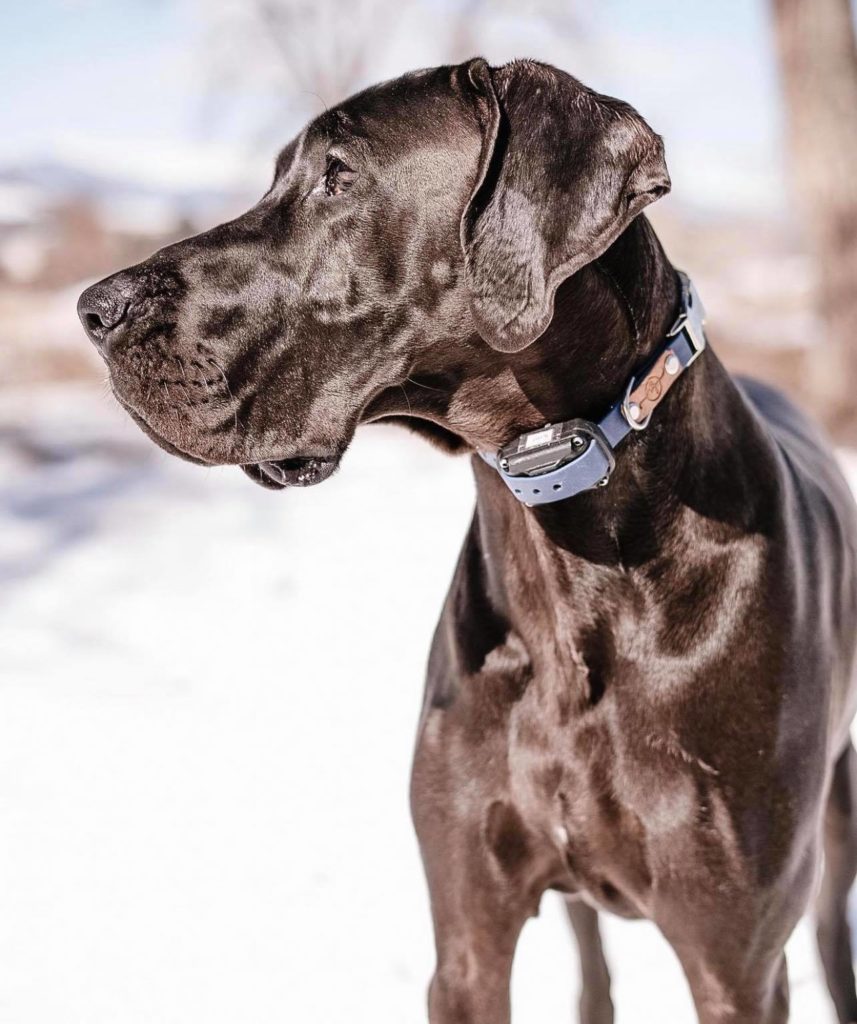
7 Health Battles that Great Danes Fight
Take dilated cardiomyopathy of a Great Dane, for example.
It’s a condition where the heart muscle weakens and the heart chambers dilate (enlarge), which lowers the amount of blood that is pumped through the body of a Great Dane. It can be caused by excessive exercise, but is typically caused by genetics or an underlying medical condition.
Bloat
Bloat is a condition that can affect any mammal, but is most common in large chested dogs. It occurs when the stomach becomes distended with gas, food, or fluid, and can quickly become life-threatening if not treated immediately.
Though the exact cause of bloat is unknown, there are several factors that may increase the risk, including gut health, genetics and anxiety.
Can You Prevent Bloat?
Stomach Tacking: Pros and Cons
Bloat and Gut Health
The Scary Bloat Timeline
Some evidence shows that by adding some raw food into the diet, you can increase positive gut health and lower the risk of bloat. Here is some of our favorite freeze-dried raw:
Symptoms of bloat include a swollen stomach, restlessness, pacing, and drooling. If your dog exhibits any of these signs, it is important to seek immediate medical attention. Bloat is a very serious condition, and requires extremely fast attention.
For more information on bloat and torsion, be sure to check out our above linked resources.
Hip Dysplasia or Arthritis in Large Breeds
One of the health concerns that big dogs are prone to is hip dysplasia or arthritis.
For big or giant breeds, this can be especially crippling since they often heavily rely on their hips for mobility. Smaller dogs, on the other hand, tend to be less affected by these conditions since they’re not carrying around as much weight.
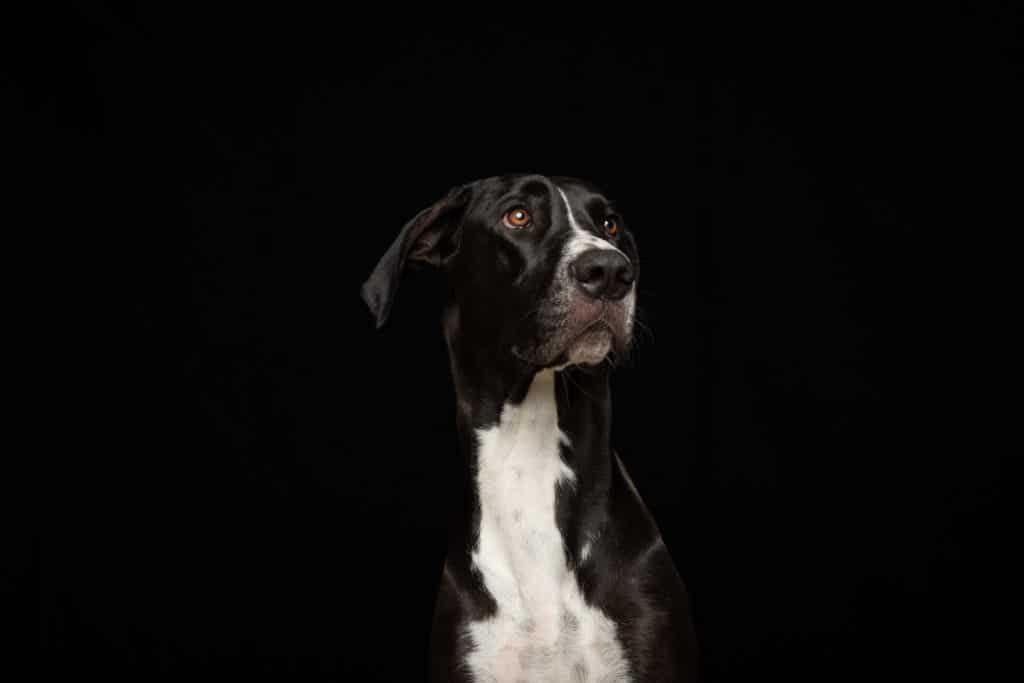
Arthritis in Great Danes? Read here.
If you’re thinking of getting a big dog like a Great Dane, do your research first to see if the breeder knows whether or not their line is susceptible to hip dysplasia or arthritis.
Also, ensure that you are working to protect the joints of your Great Dane. If you want to take your Great Dane on long hikes or use them as your running partner, you may want to do some research first. We’ve got some tips here:
Cancer
Cancer is a disease that most people know about, but few truly understand.
It is the unfortunately fairly common in dogs, and can cause a wide range of health problems.
While Great Danes are particularly susceptible to cancer, all breeds of dog can be affected by the disease.
Cancerous tumors can grow anywhere in the body, and can often spread to other organs. One particularly aggressive type of bone tumor (and the most common bone tumor in Great Dane dogs) is Osteosarcoma.
This can lead to a decline in overall health, and in some cases, death. Early detection is crucial to treatment, so it is important to be aware of the signs and symptoms of the disease. If you suspect that your dog may have cancer, please contact your veterinarian immediately.
Six: Great Dane Grooming
When it comes to grooming a Great Dane, there are a few key things to keep in mind.
First of all, those nails need to be kept short. If they get too long, they can start to cause problems with the dog’s gait and potentially even lead to injury.
The best way to keep them trimmed is to use a nail clipper designed specifically for Great Dane’s nails. It is CRUCIAL for your Great Dane’s health- despite sometimes seeing Great Dane dogs out there with long nails.
Secondly, that short coat needs some TLC, but not all together too much. A great Dane’s coat is short, but it will still need to be brushed on a regular basis. A good brushing will help to remove any dirt or debris that might be tangled in the fur, and it also helps to distribute the natural oils that keep the coat healthy and lustrous.
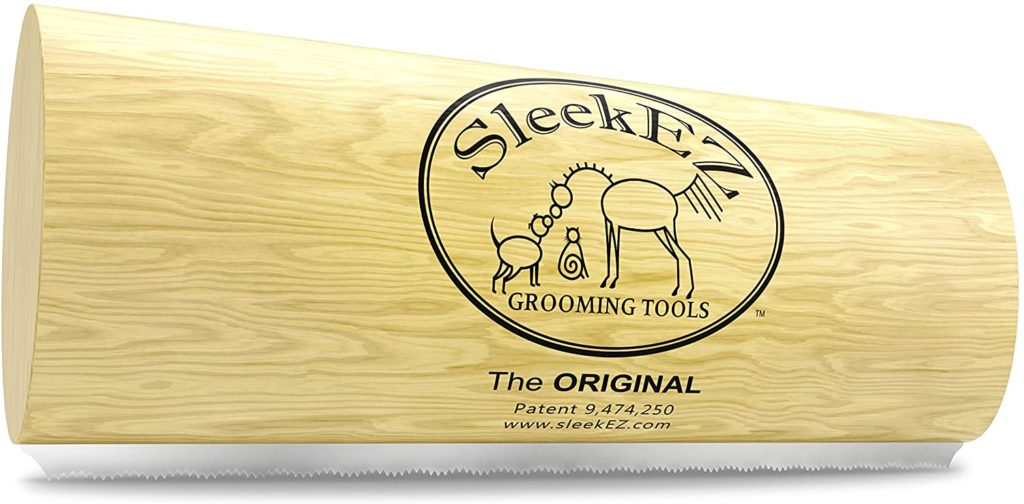
Finally, don’t forget the occasional bath! Even if your great Dane doesn’t seem particularly dirty, a good shampooing will help to ensure that their coat stays clean and free of any unwanted odors.
Seven: Mental Engagement and a High Energy Great Dane
A good old couch potato. We all know one. They’re the people who would rather spend a lazy Sunday afternoon lounging on the couch than getting out and about.
And couch potatoes aren’t just limited to humans – dogs can be couch potatoes too. However, time and time again we see people unknowingly adopting a Great Dane as they search for their ‘couch potato’ soulmate, only to find out their Great Dane actually isn’t lazy at all.
Use LOTS of treats and engage with them often! Heres some of our favorites.
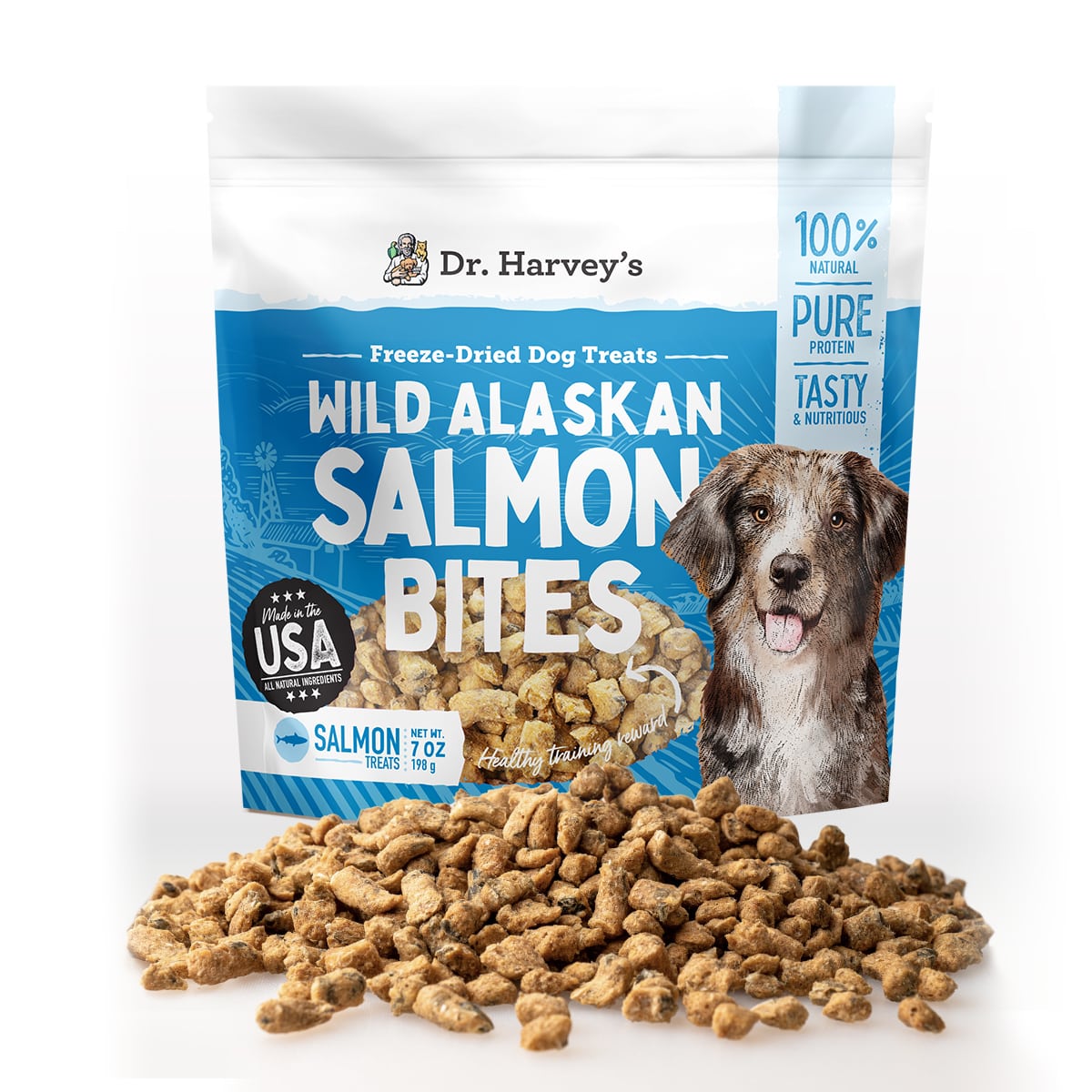
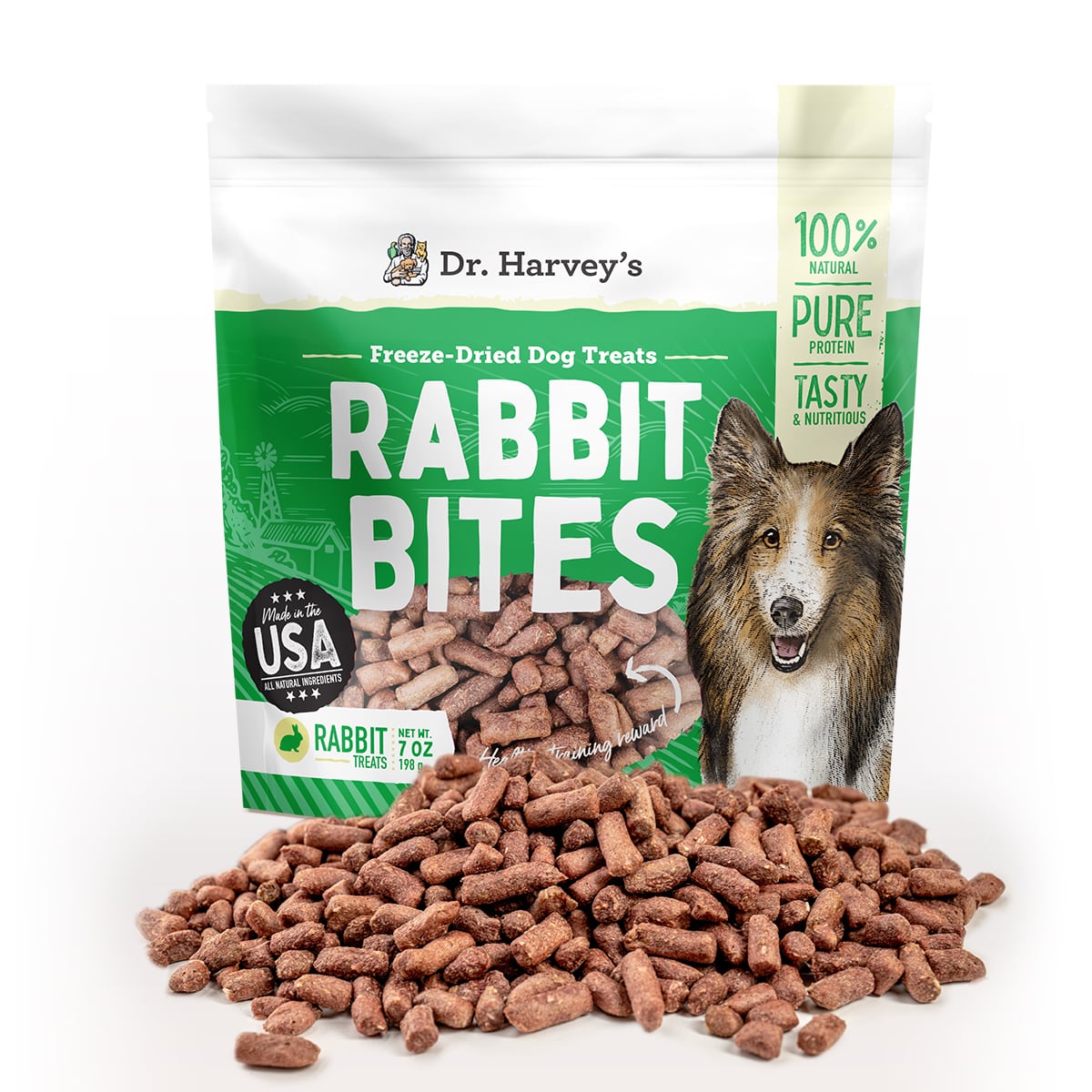
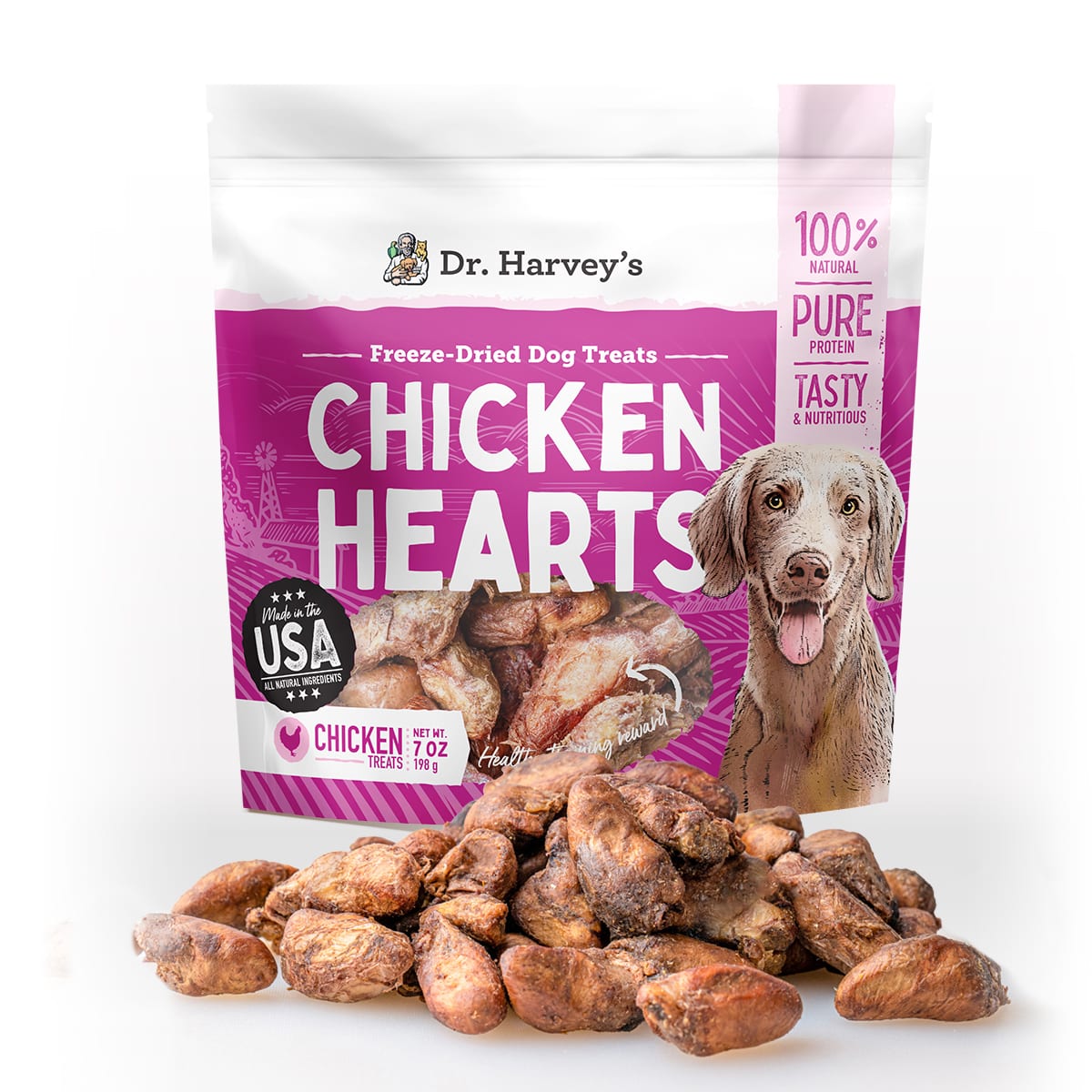
A Great Dane can be VERY high energy.
And for high energy dogs, mental stimulation is just as important as physical activity. If a high energy dog isn’t given enough to do, they can become bored and destructive. That’s why it’s important to choose the right dog for your lifestyle.
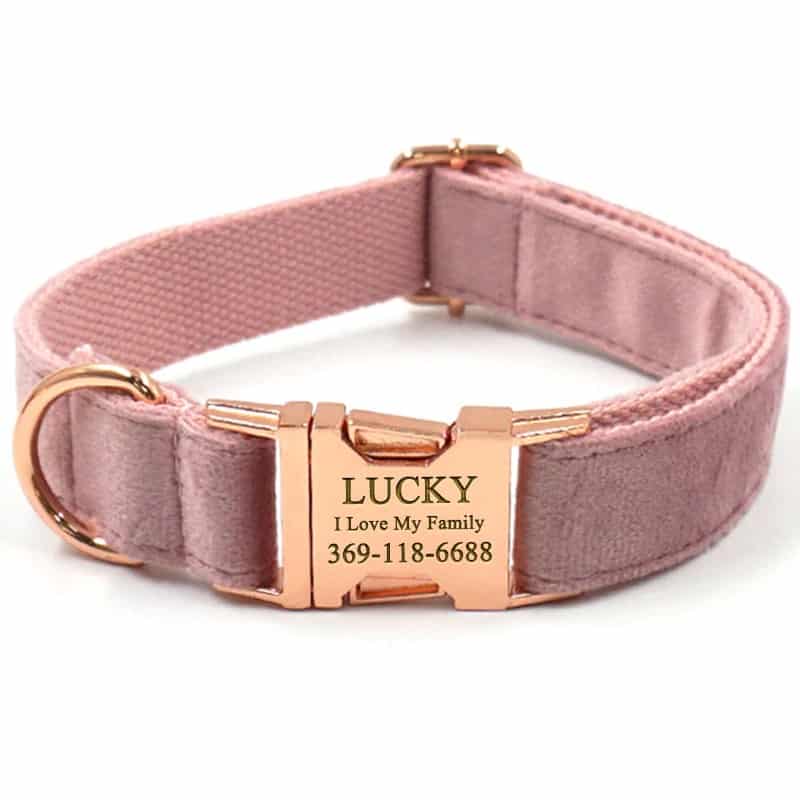
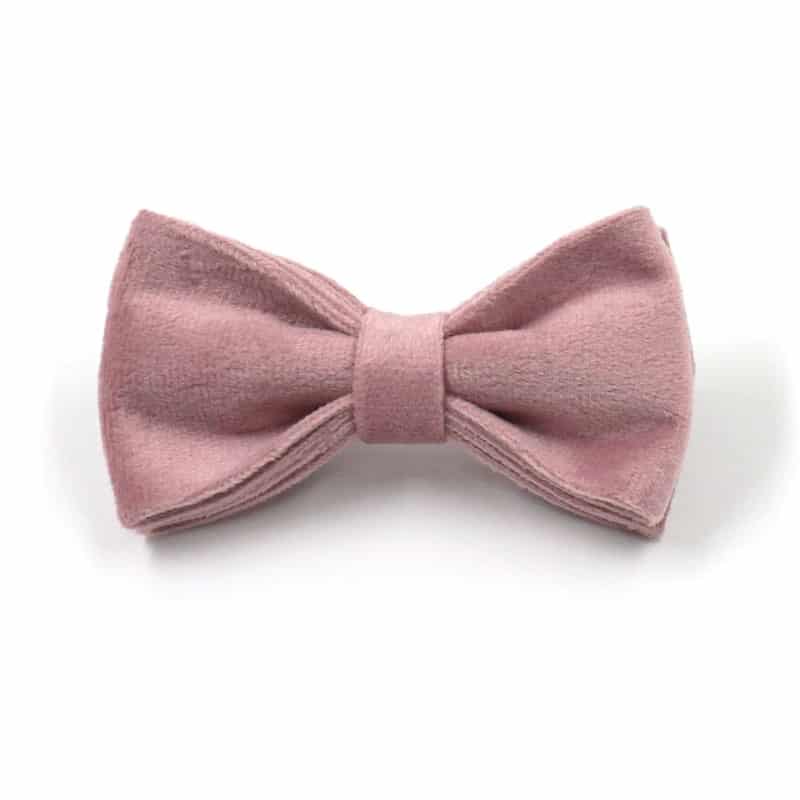
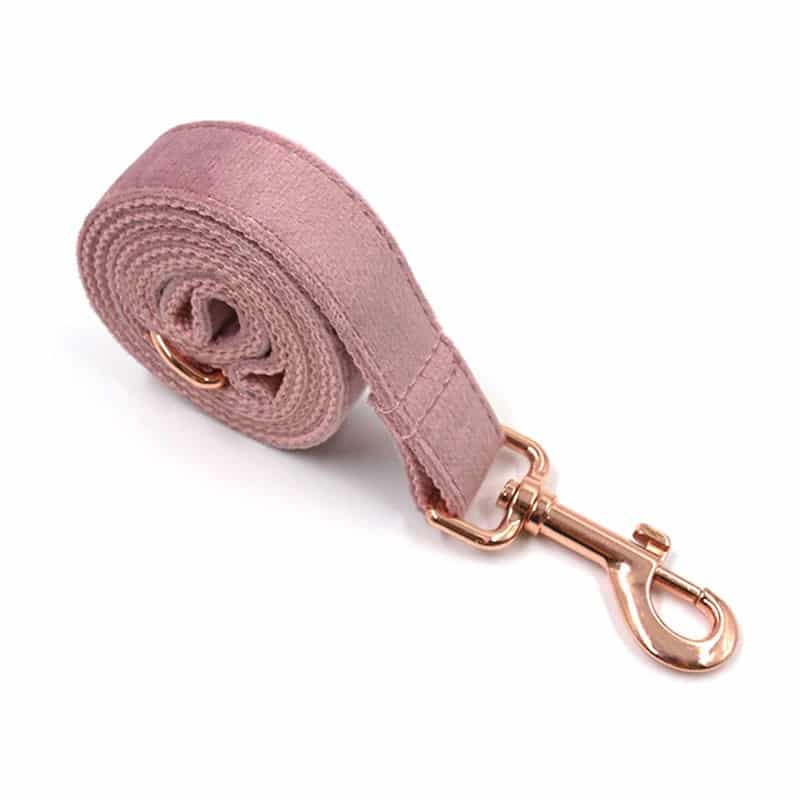
If you’re looking for a low-maintenance pet, SOMETIMES a Great Dane puppy is the right choice. A high-quality breeder will look at your lifestyle and match you with a temperament that suits your family and needs.
Just remember, every dog is different, and you should always be prepared to provide exercise and mental stimulation for your dog- whether they are lazy or not.
Eight: E Collar Training for Your Large Breed Great Dane
A Great dane grows very fast and will become very strong at a young age. Using an e collar is one way that you can work effectively with your Great Dane (and other breeds). We support ethical Great Dane e collar training. Please do not ‘shock’ your Great Dane with a cheap shock collar from Amazon or a pet store.
E Collar Training Guide
E Collar Myths
What is an E Collar?
What is the Difference Between an E Collar and a Shock Collar?
There is a difference between a high quality e collar with a stim device inside of it and a ‘shock’ collar, which can create anxiety in your Great Dane.

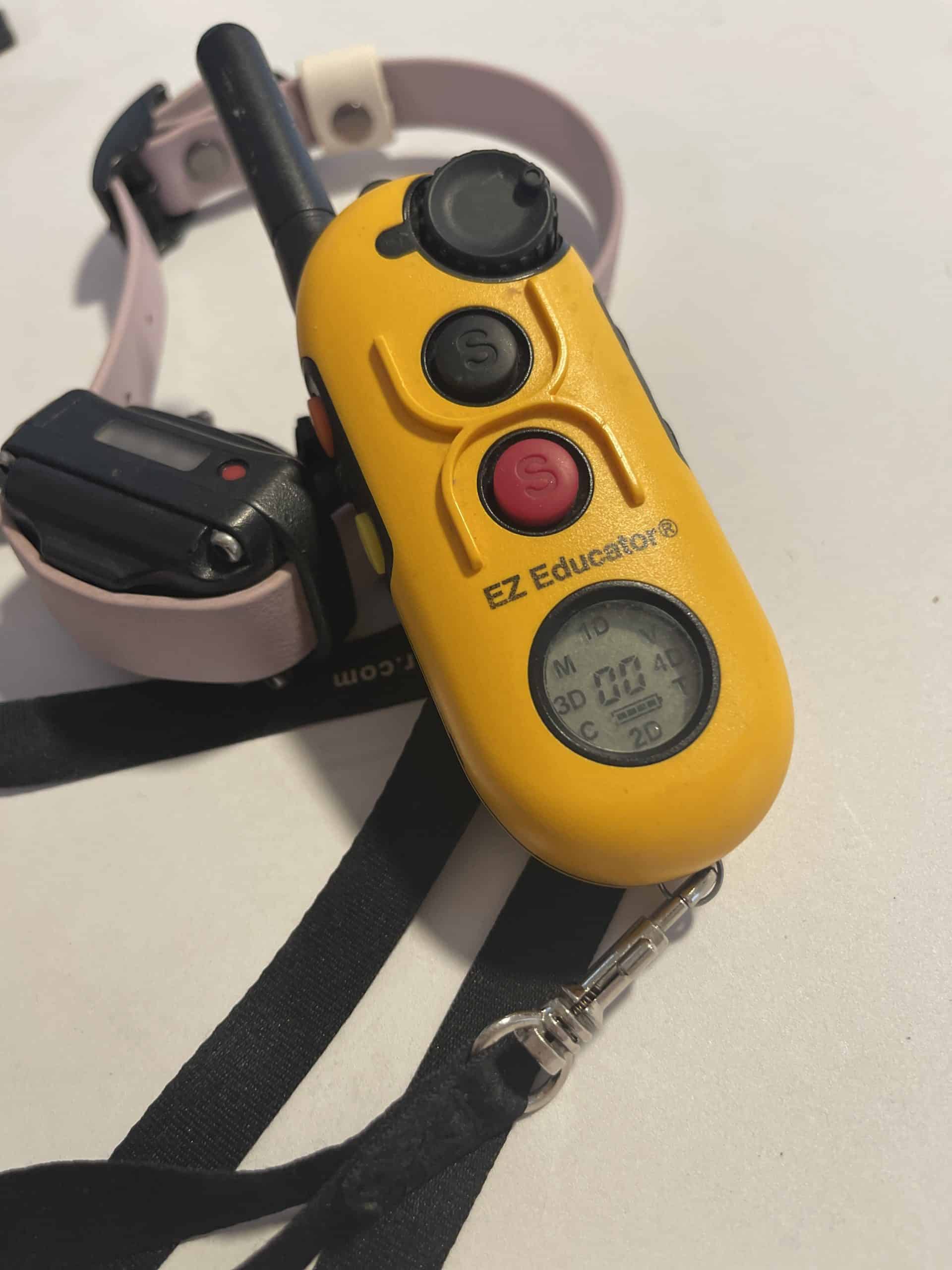
If you are in need of resources to help get started with an E Collar for your Great Dane, we have plenty. Check out our Great Dane E Collar Guide here.
Additionally, you can purchase an e collar for your Great Dane in our shop and receive free shipping.
Nine: Ensuring Your Dog Interacts Well with Other Dogs and Other Animals
A well socialized Great Dane loves to play with other well managed and behaved dogs, engage with humans and kids, and has proper manners.
Since the Great Dane is such a big dog, it is so important that you socialize and train them from a young age. Other breeds training is not as dependent on the dog’s age as a Great Dane, as their size rapidly increases and at a young age Great Dane dogs can be strong and powerful.
If your Great Dane is going to be spending a lot of time around other dogs as they grow up, you want to make sure that they know the expectations.
Preventing Leash Reactivity in Dogs
We do not encourage on leash greetings between two dogs that do not know one another. Many dogs have leash reactivity, and if your dog does not– it can easily be developed.
Having one dog on a leash approach and say hi to another dog on a leash can be something that will cause reactivity on the leash to begin.
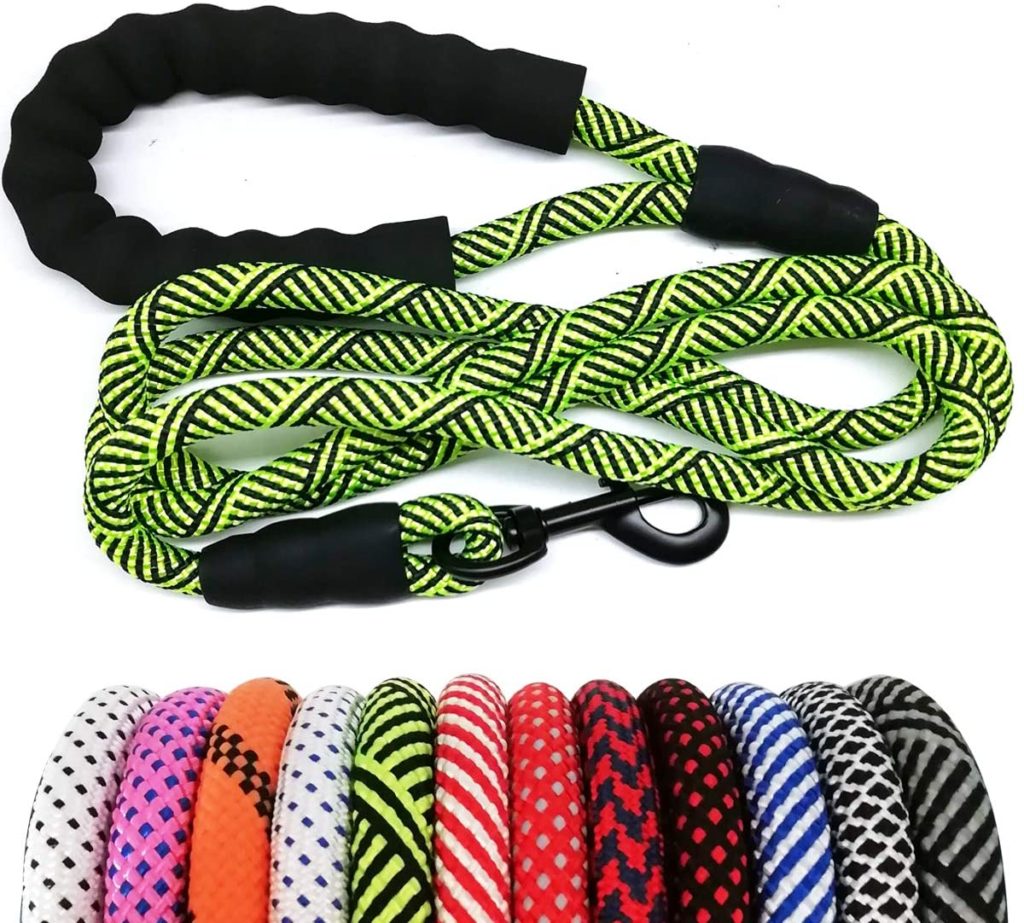
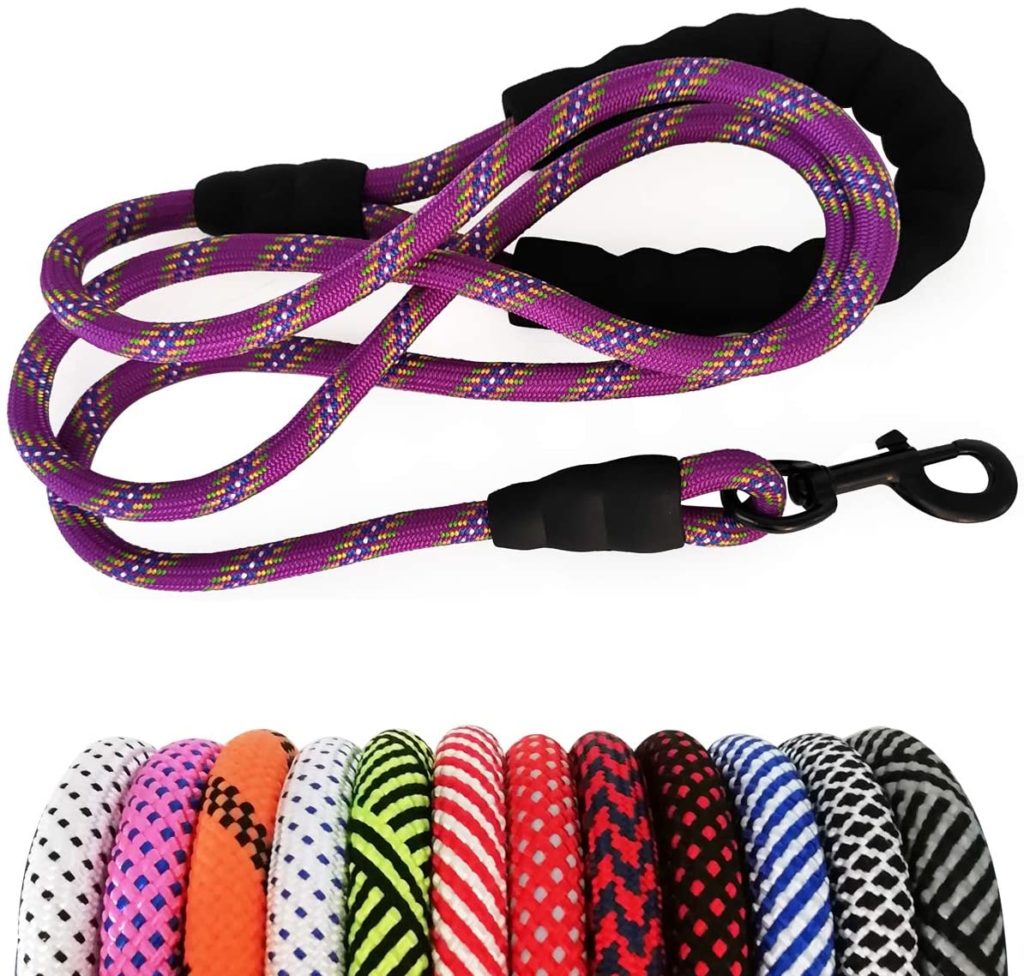
What to do if your Dog Shows Fear Around Other Dogs or People
Some dogs are naturally more prone to anxiety (typically from bad genetics). However, Great dane dogs as a whole breed should not be timid or nervous or anxious.
If you notice that your dog is showing signs of nervousness around another dog, you should remove them from the situation before it escalates. Knowing the signs of anxiety is important.
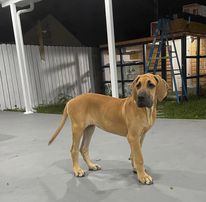
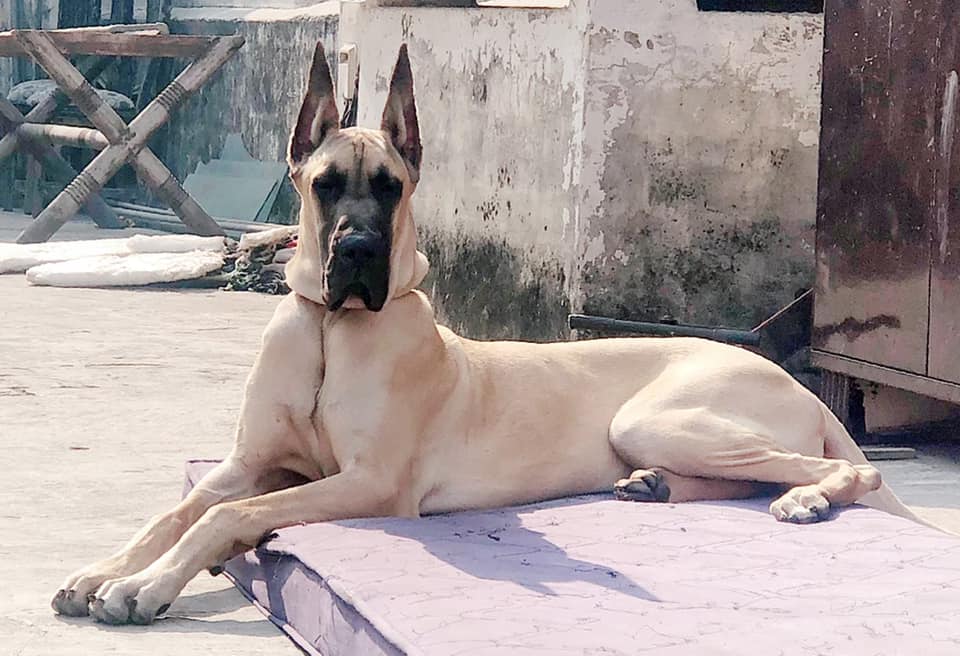

Signs of Anxiety in a Great Dane
Anxious behaviors in dogs can look like this:
- Panting
- Lip licking
- Yawning
- Whale eye (when a dog shows the whites of their eyes)
- Tucking their tail
- Freezing/not moving
- Cowering/slinking away
Overcoming Fear with your Great Dane
The best way to help your dog overcome this nervousness is to desensitize them to situations that put them into this fear in the first place.
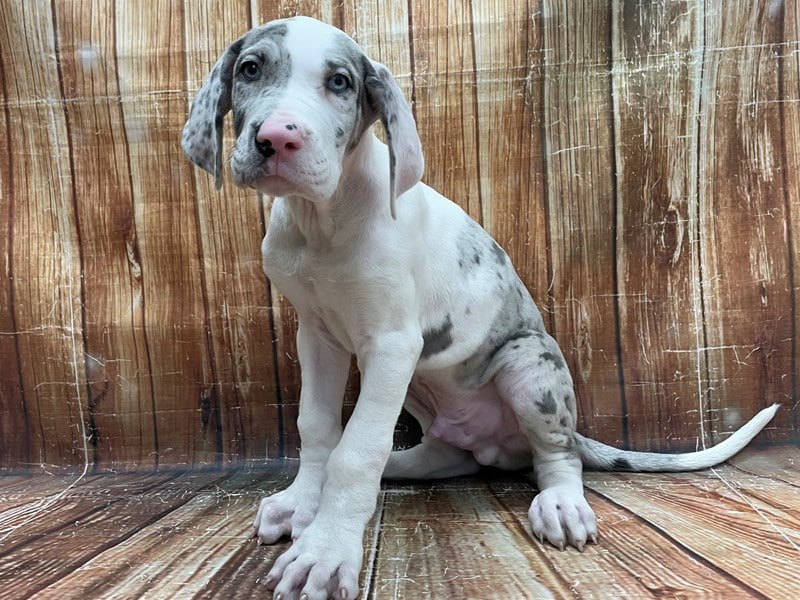
Great Dane Puppy Fear Stages
Spend time with your Great Dane walking around in a parking lot or sitting on a bench at the park. Let your Great Dane look around and watch, but do not let people come up and pet your dog.
Does Everyone NEED to Pet Your Great Dane?
No matter what, it is your job to show your Great Dane that it is safe to be in public and around society members. One way to show a Great Dane this safety is to make sure that they understand that they can be IN the chaos but not APART of the chaos.
Not every dog wants to meet new dogs or be pet by strangers. Over time, your Great Dane will get more comfortable with these new situations, but in the meantime- advocate for their comfortability.
Ten: Welcoming Your Great Dane as a Family Member
Welcoming a Great Dane into the family is an exciting and fun adventure. Great Dane dogs are some of the most incredible species and have so much love to give.
In conclusion, here are some final tips for you as you embark on your Great Dane journey:
-Research, research, research! This breed is not for everyone and it is important to know what you are getting into.
-Find a reputable breeder that health tests their dogs and can provide you with references.
-Be prepared to have a big pup in your life- both physically and emotionally.
-Danes require a lot of time, energy, patience, and training.
-Make sure you are willing to commit to this breed for their entire lifetime (roughly around ten years).
-Be prepared for lots of drool, slobber, and messes.
-Danes are not the best guard dogs but can make great watchdogs.
-You will quickly fall in love with this amazing breed!
Thank you for reading and we hope this was helpful! Please leave any questions or comments below!
READ MORE: E COLLAR 900 REVIEW
Is My Great Dane Puppy Knuckling?
Embark DNA Review: Worthwhile or Waste of Time? 6 Things I Learned!

JOIN OUR COMMUNITY
Do you like modern positive+balanced off-leash dog training, science-based information, life with Danes, educated ownership and chatting with other like-minded people?
Join our growing Facebook group!

